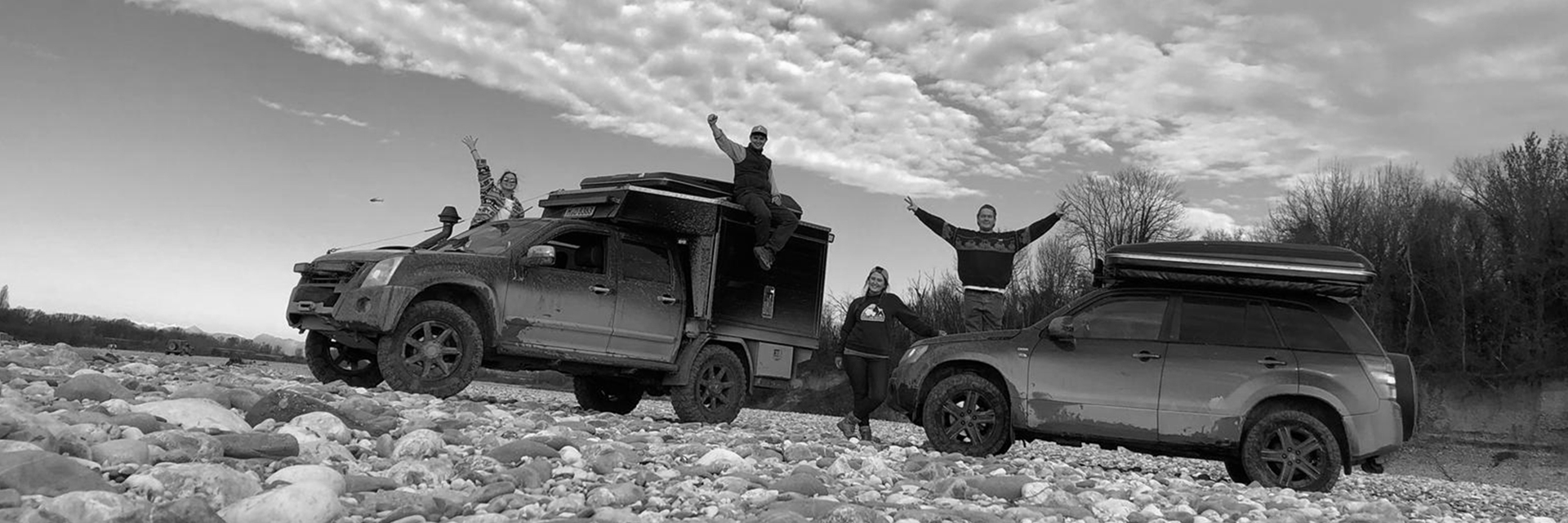GIUSEPPE FERCODINI
INTERVIEW
By Eugenio Martignani
Roof tents: which one to choose?
An interesting conversation with Giuseppe Fercodini, founder and owner of Autohome. The main principles of a mythical product that became the symbol of the journey in freedom and its guide to the purchase of the right tent.
Who is Giuseppe Fercodini, a life dedicated to roof tents?
Only by knowing the character can we understand the philosophy that led him to create a product that has become a status symbol and synonymous with adventure.
I have recently turned 60 and I can safely say that much of my life was devoted to knowing, improving and promoting our product "roof tents”. Over the years, my brother Giacomo and I, with the Autohome brand, always aimed at making us people understand first of all what quality means in our sector. A commitment which we still consider to be a priority today. Indeed, today perhaps even more than once! We were pioneers in our field and we had in mind, since we designed the legendary Maggiolina, that quality, which then means practicality, livability and durability of the product, should be our must have. We built our market positioning on these principles. That require honesty and transparency. Because quality is a concept that goes beyond brands. The same applies to Autohome. I still consider myself a "craftsman-entrepreneur”. I am not a trader, let alone an accountant or importer of that come from abroad. I'm just a perfectionist, that's what they say about me! I think I am a person who loves beauty and beautiful things, created by man and nature. I have two passions that I believe in: freedom and travel. Each tent has its own soul, a story to tell. Our job is to help people achieve this goal: to travel freely. I don't even know exactly how many models and combinations we have in Autohome, between sizes and colours we may exceed 100 variations. If Autohome did and continues to do the history of roof tents, it is because since 1958 it has always been consistent with these principles.
Why does the roof tent like more and more and what is its charm?
First at all, it is a choice of independence, which opens up perspectives that other modes of travel cannot offer. Whatever the type of trip, discovery, adventure, relaxation, from the big raid to the short weekend, the roof tent can be fast and easy, transforming the vehicle into a home in seconds, wherever you are. The real roof tents, and I stress true, are stable and safe in the wind, do not undergo installation constraints. They always allow comfortable accommodation in the front row: by the sea, by the lake, by the river, in the pine forest... however in direct contact with nature.
What is the most requested and preferred tent by users today?
Let me take our offer as an example: Autohome shell tents are exported to more than 40 countries and account for 70% of sales; the remaining 30% belongs to fabric tents. Why this reversal of trend? Because only a few years ago, "pure and hard" adventurers, Saharans included, who were prone to folding fabric tents, prevailed.
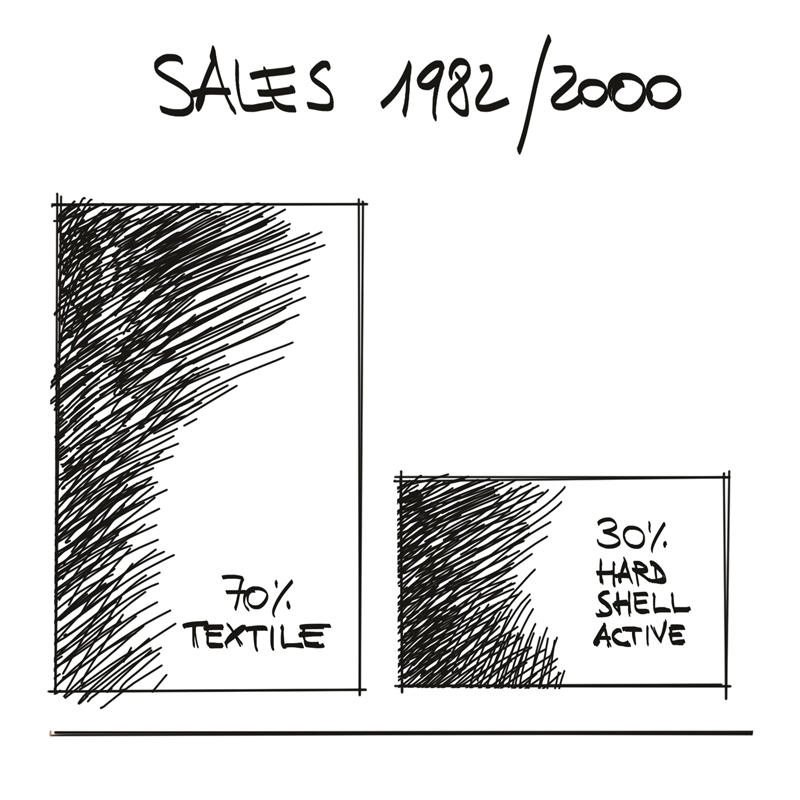
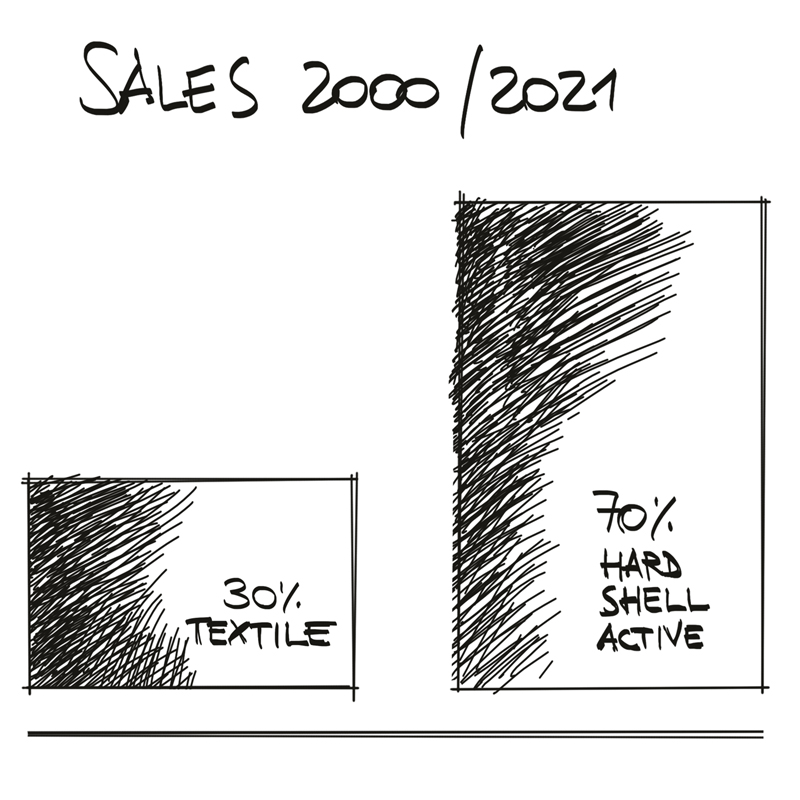
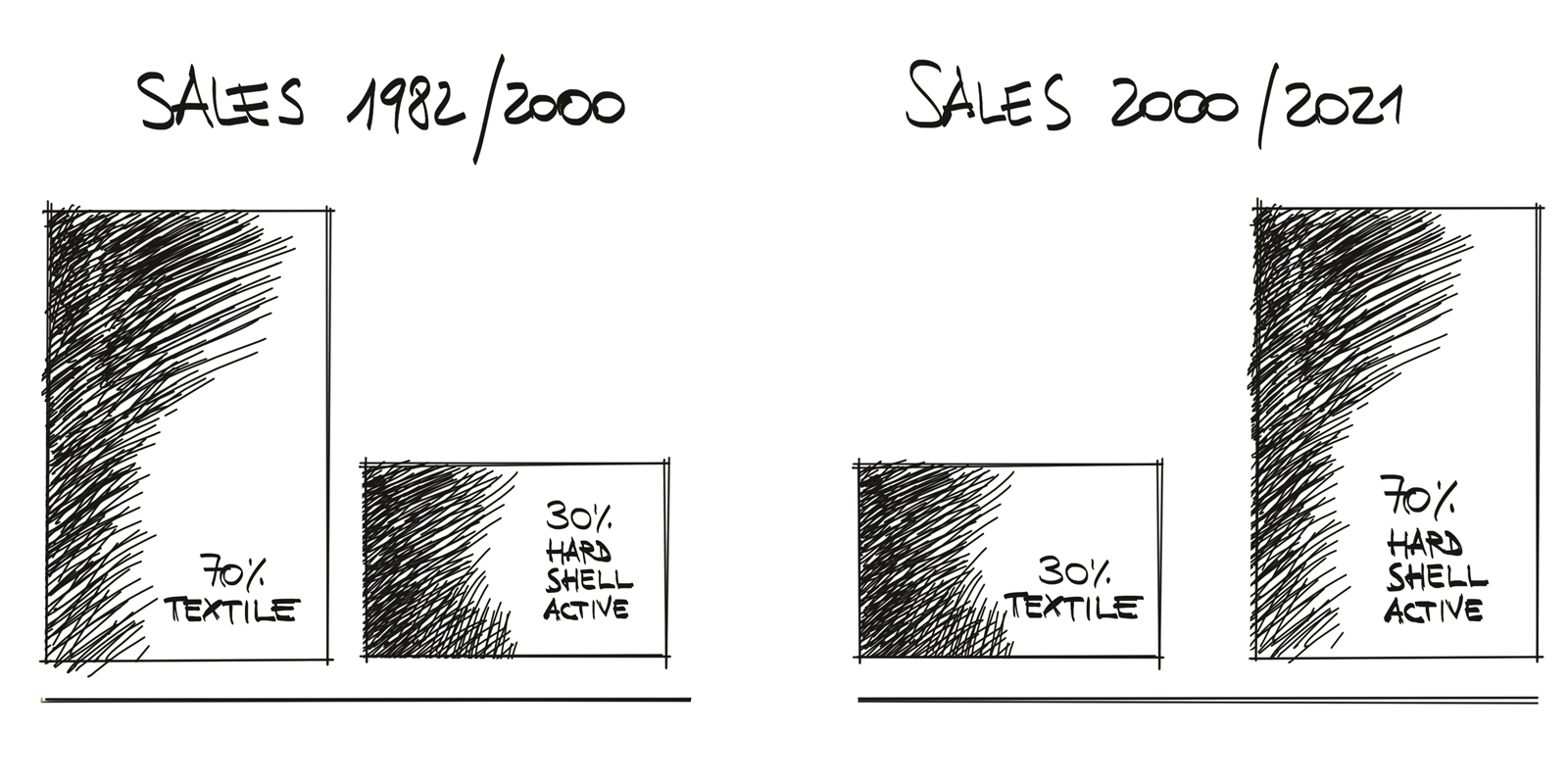
Africa and the desert were their the main destinations, ideal destinations for explorers and travellers. We are talking about tents intended mainly for large 4x4-Off Road vehicles. It can rightly be said that the success that became planetary of roof tents began with the legendary Land Rover 109, thanks to the memorable feats of the legendary Nino Cirani, still today an icon of adventure for fans.
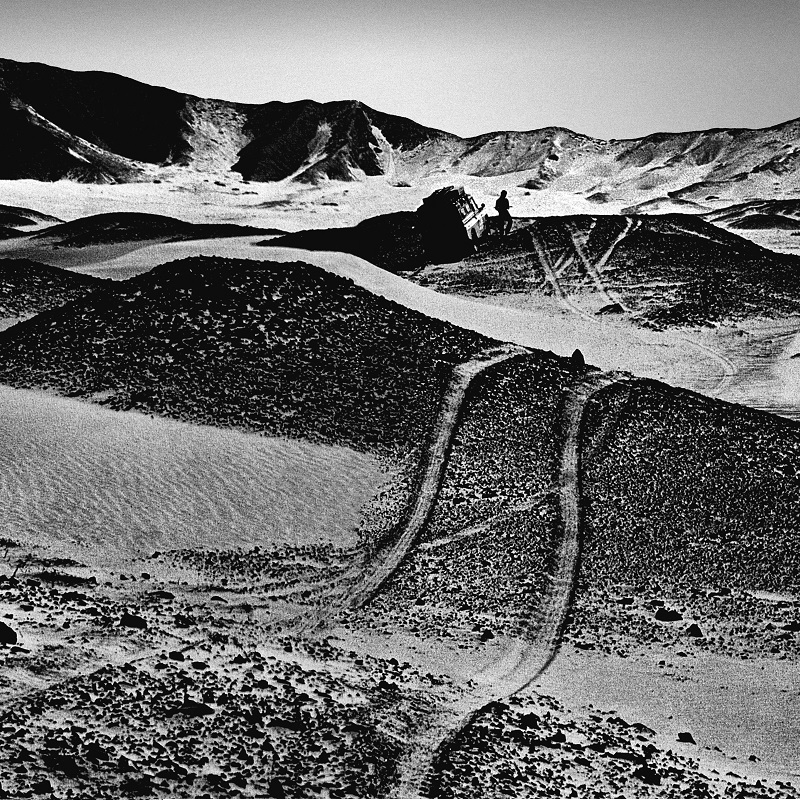
Above the Peruvian desert. Image by Nino Cirani, published in the book "Il raid automobilistico”, editorial Domus.
The main reason for choosing the fabric tent was that it occupies half the roof of the off-road vehicle, thus leaving the other half in space to carry tanks, spare tires and travel equipment. This was the main choice in the Off Road world that distinguished the market. But that is no longer the case today. The tent with a shell roof has taken over. There are those who say: but it costs more. I am convinced that in our sector the priorities go to other aspects, at least for those who really love free travel. I remember a traveling friend saying, “... if you go to a good restaurant and eat very well, you will remember what you ate and not the bill”.
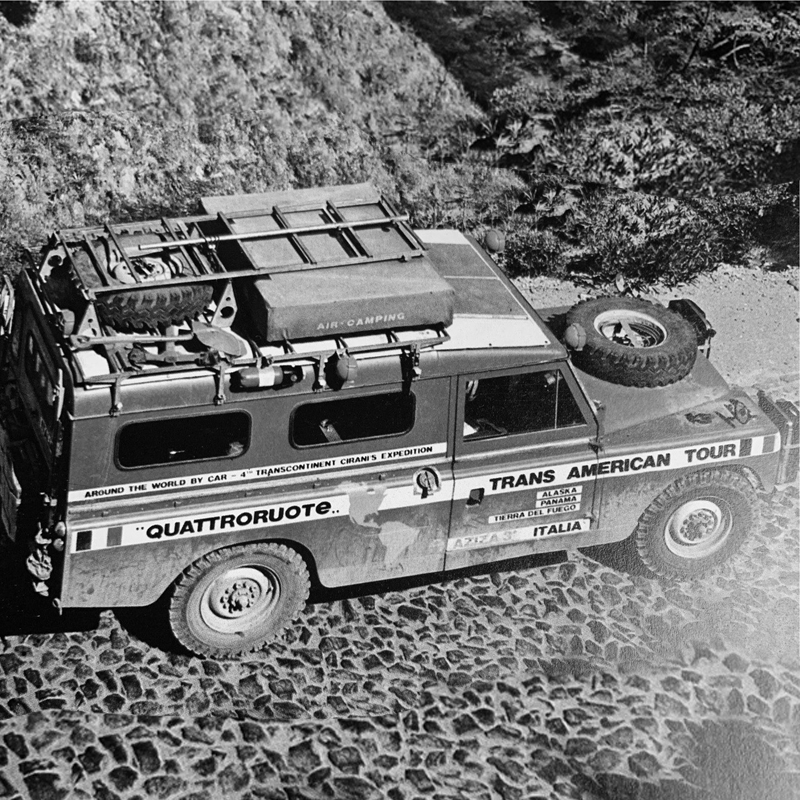
This is Nino Cirani's share 3 - Land Rover 109.
It should be noted that the tent occupies half the roof of the vehicle, thus leaving space to carry spare tire tyre and other travel equipment.

The open awning does not come out of the shape of the car, which means you can camp wherever you are.
Let's first talk about the traditional fabric tent. What are the strengths and weaknesses, and on which particulars to focus your attention to make the right purchase?
The fabric tents are essentially very compact when closed, and become well habitable when open. But be careful though: they open with a cantilevered platform and then come out of the shape of the car.
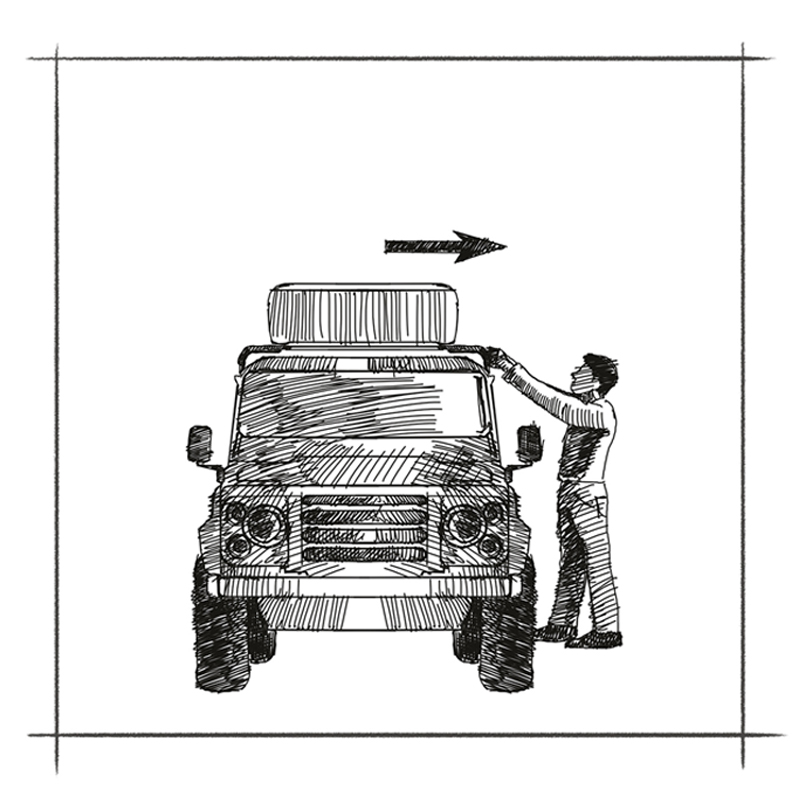
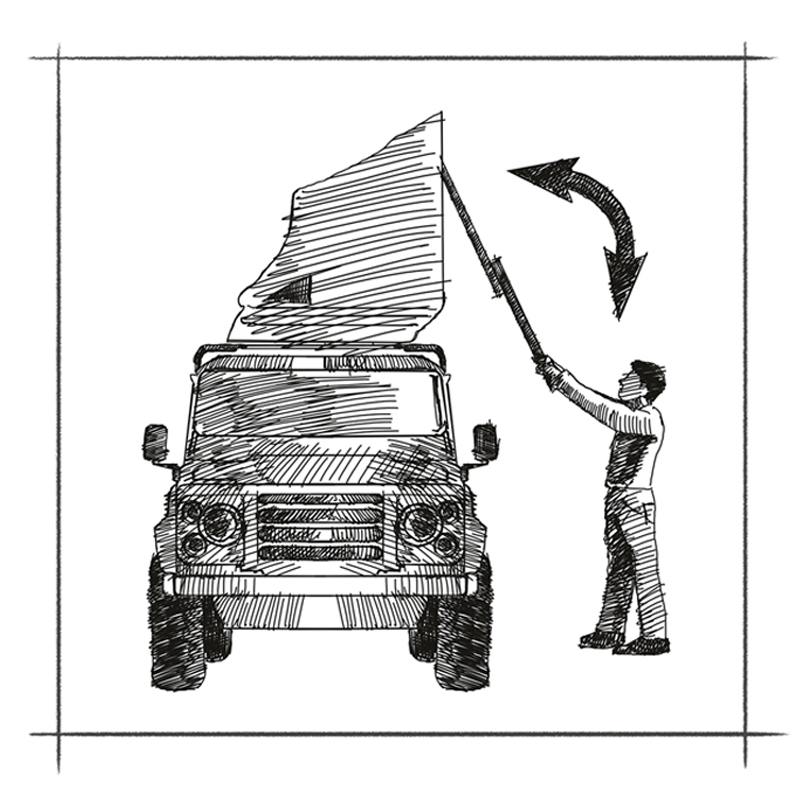
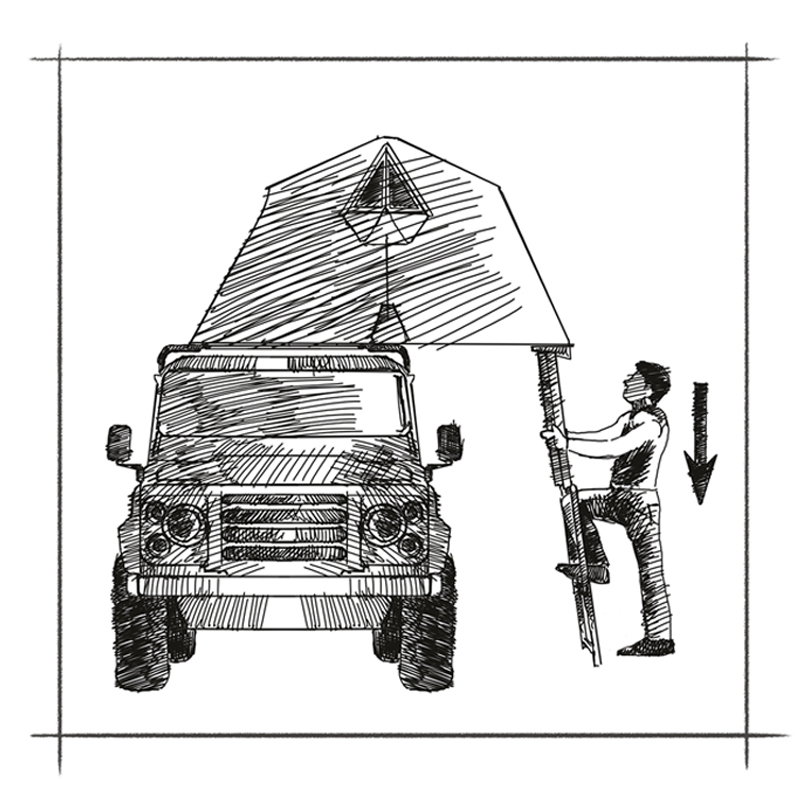
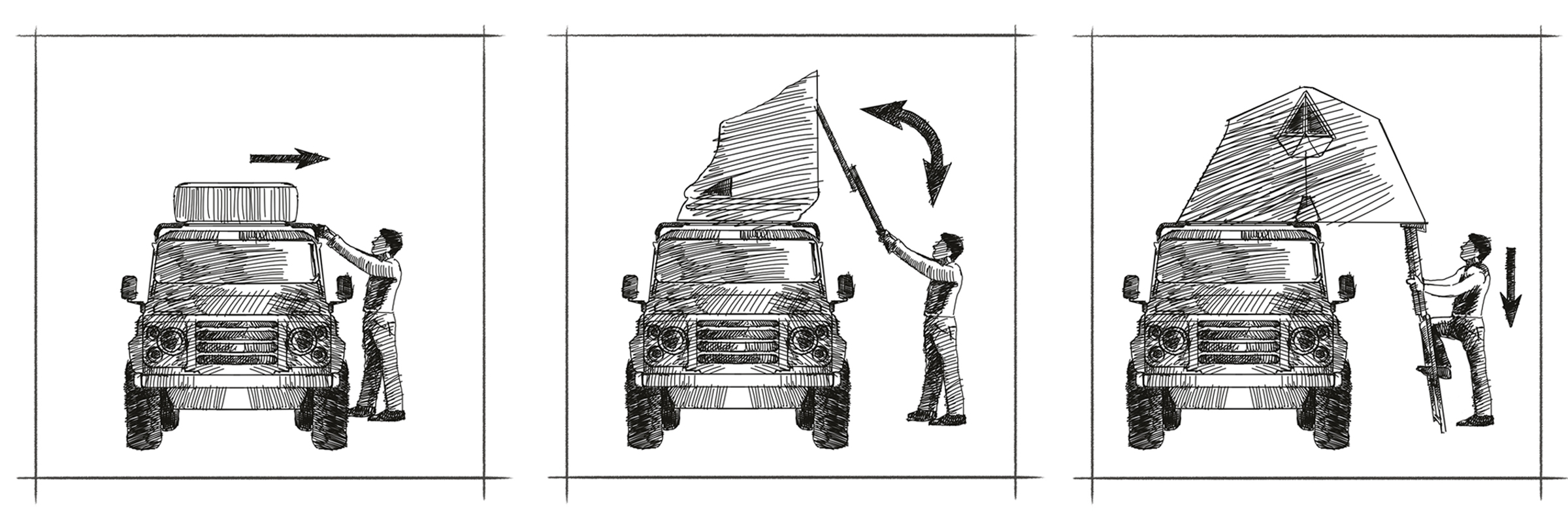
Let's see some aspects not to be underestimated.
The first point is the ladder: it should not be considered as an element to be kept detached from the tent and stored in the trunk of the car, that is to say, to be hooked whenever the tent is opened. Conceptually the ladder is a structural and load-bearing element of the tent in all respects. So I recommend checking that the ladder is integrated.
Second point: materials and structure of the platform. Autohome fabric tents have waterproof and water-repellent hardwood base with high elasticity, thus ensuring reliability and durability. Quality guarantees very different from tents of Asian origin that have floors in... coated polystyrene! So, before each purchase, check this item very well.
Third point: windows. That they must be perfectly integrated and not have protruding structures, because let's not forget that we are high from the ground. Personally I hate any stakes to match the windows as well as you can notice in low quality competitors product. Another aspect that I do not share in those tents are the windows on the roof, because they can easily become a source of rainwater infiltration risks. And then pay attention to the wind: a tent about two meters from the ground cannot have accessory elements such as canopies and anything else. The tent must be a single body, the roof must necessarily be integral with the walls. If you do not check these aspects during the purchase, there is a risk from the first use... to take the flight and go hang gliding! Not to mention the sailing effect of the fabrics: in many resting places the wind is a constant, which can create instability and noise, causing sleepless nights.
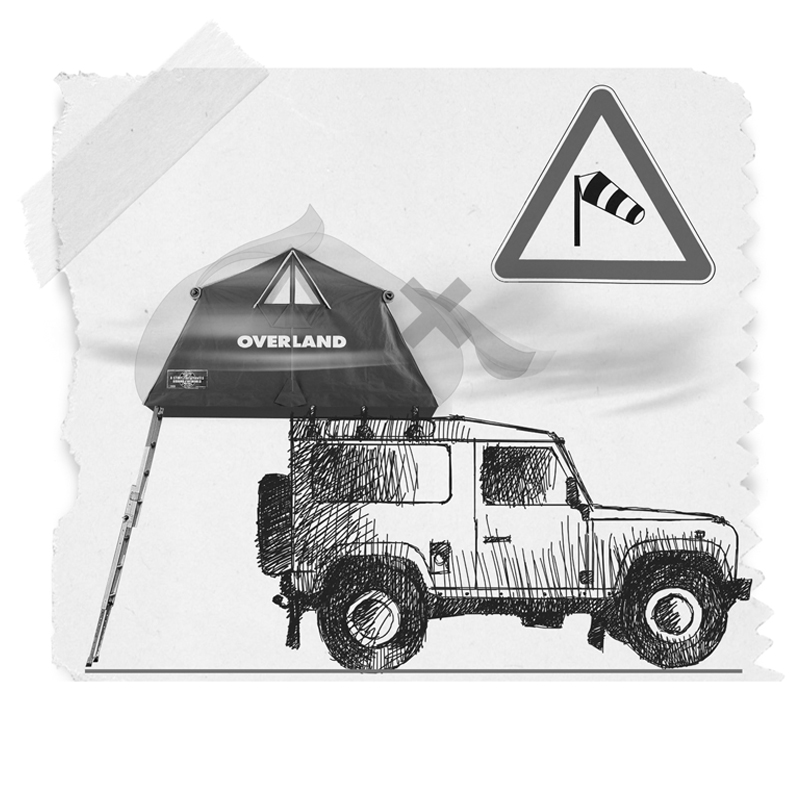
An Autohome range tent is represented here.
A real windproof roof top tent. A serious, original and grand design project that does not generate turbulence and noise, much less "the sail effect" or "the ball effect" that are avoided.
In Autohome we have always known these problems and we solve them on our fabric tents with fabrics and designs that are the result of the experience of many years of activity. One day, an authoritative off-road character said, "You are Italian and you like cooking, so you know how to dose the ingredients to make a good dish." This joke has stuck with me, I still treasure it today and I apply it to my tents that must be made of heavy fabric, this is the first ingredient.


The second ingredient is that they must be simple and have little protruding fabric that generates sailing effect. It is usually preferable to stay in a private area or camping with a fabric tent. This is at least the law in force. The tent does not fit in the shape of the car, it comes out of the mirrors and therefore it is believed to occupy public land. They are therefore bound by the rules on the occupation of public land, a fundamental difference compared to the rigid roof tents, which are kept in shape. To recap: the great advantages are habitability and comfort. The most obvious problem is to have overnight limits in public areas.
Well, now let's consider the hard-shell tent. What are its strengths and how to choose it?
I believe that today these tents really have something more than fabric tents. In particular, it is the roof that makes the difference. Having a roof made of rigid and suitable materials means having a more insulated environment: you are more insulated from the heat and cold, more protected from every point of view. It is no coincidence that experts call them ACTIVE HARD SHELLS, that is, TENTS WITH AN ACTIVE ROOF.


INSULATED ROOF
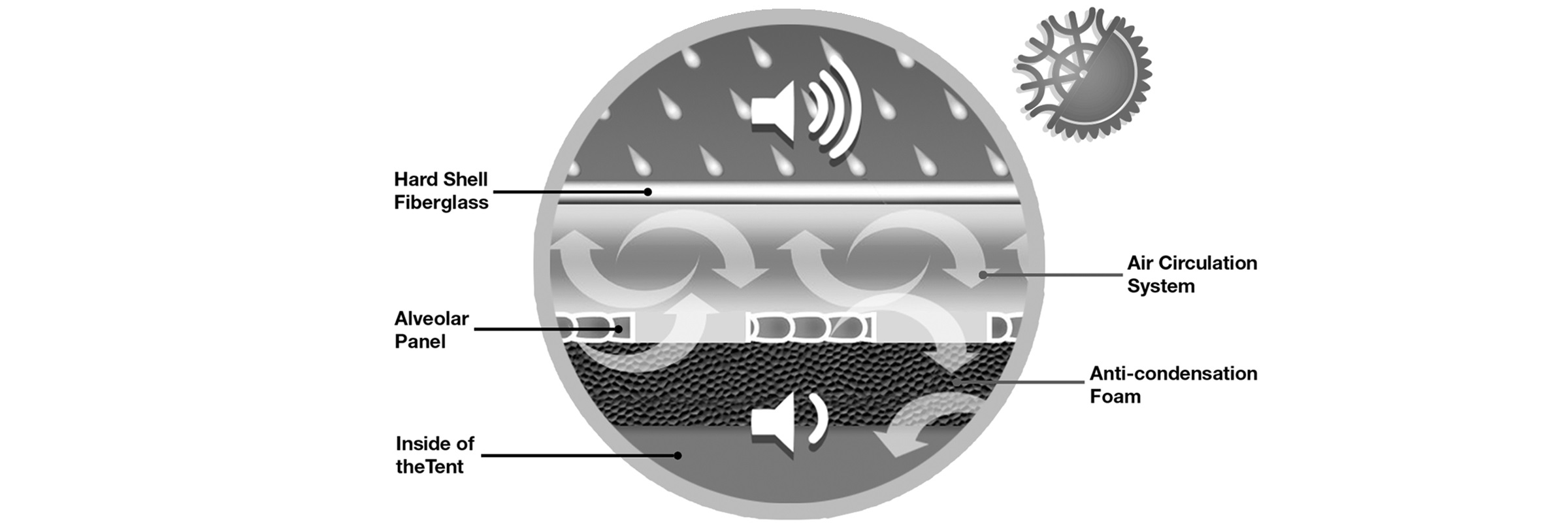
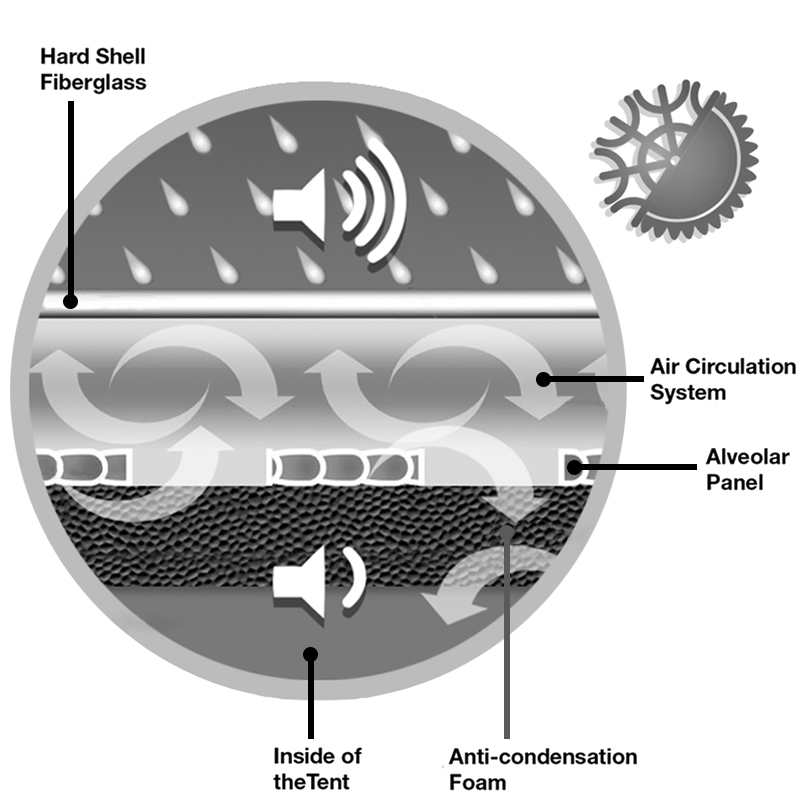
In fact, they have a little less internal habitability than fabric tents, but just choose a tent of the right size and the spaces become ideal. It must be considered that the shell tents are more compact and more stable than those in fabric, especially in case of storms. They completely prevent infiltration. Welded fabrics, double sheets and PVC cannot compete with a rigid roof, among other things made of fiberglass which is also equipped with an internal insulating membrane. So, to sum up, I would say that the main advantages of shell tents are: an extraordinary stability without sacrificing the speed of opening and closing; to this is added the fact that the mattress is slightly higher and does not fold as for fabric tents. It is a single piece and has not been spliced. In addition, shell tents have no limits in deciding the location of overnight stays in public areas, because the tent and the ladder fall within the shape of the car.
The disadvantage, if we can define it that way, is only one: a higher cost of purchase than the fabric tents. But I strongly invite you to consider what they can guarantee over time in terms of comfort and safety, especially in adverse weather conditions.
Let's go into the specifics of materials and talk about fabrics. What is the best material and how to recognize it? 
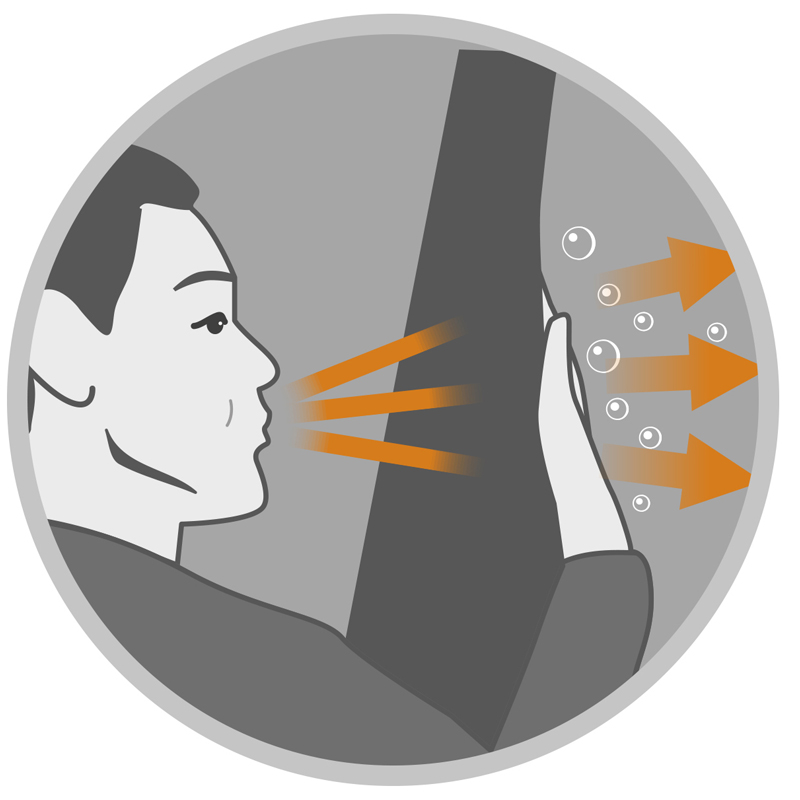

It is a crucial choice in a tent, naturally affecting its quality and costs. In the market you can find everything: more or less heavy, breathable, waterproof fabrics. In detail, it ranges from high waterproof or watertight fabric such as PVC, to lightweight nylon such as Igloo tents, to coated, resin, synthetic, acrylic, eco-sustainable fabric to natural cottons and mixed fabrics. Autohome does not trust products from markets outside Europe, and this is because the quality is too variable. On this element, our purchasing department is particularly careful. In summary: for fabrics, yarn for seams and also for mosquito nets we turn to Made in Germany suppliers of great seriousness and specialist expertise. I consider it essential to use the most breathable fabric possible or in any case the one that transmits the best heat and condensation to the outside, of course it must also be waterproof. A well breathable fabric is definitely more expensive, but it is what allows you to get and it is a cooler and healthier environment. Autohome tents have a high degree of breathability and optimal heat transmission to the outside. That's why they don't need to use fans, vacuum cleaners or extractors to turn the air around. Next to the fabric, it is then necessary to consider the packaging and seams. We always try to avoid them at critical points. On this subject, I say that I have little confidence in the chemistry applied to fabrics: for example, hot tapes do not satisfy me; sometimes with temperature changes they lose grip. In my opinion, mechanical solutions or alternative packaging methods are better. The most exposed zippers, in particular, must be of high quality standard. Ours, the most exposed to water, are all waterproof and above all "spiral", to resist mistreatment and wear. As you can easily understand, in this case you need to check well before buying. Above all, do not be enchanted by certain prices offered by unknown brands or without a story, often present only on the Internet. The concept is almost trivial, but it is always important and must be remembered: even in our sector, nobody gives anything away and every decision has its price.





But an expert like you, Giuseppe, who has had the opportunity to thoroughly test and test all the tents in the Autohome range and knows their features well, which tent does he use personally?
When I was young, my first tent was the Maggiolina, which has always been my favourite. What memories! ... and that years of great enthusiasm and continuous discoveries... Initially I placed it on a Volkswagen Golf of 1982, then on a Passat Variant of the ’90s. I also used the mythical Air-Camping, but I did not have the right car to be in tune with what an extreme traveller did such as the great Nino Cirani, to be clear! Today that I am 60 years old, I use a Columbus shell with great joy. Exactly the X-long Land Rover model. This is because I want to be 100% safe and find myself in aesthetic harmony with my personal and timeless "Defender", year 2008. Also on this topic I would have a lot to tell... maybe next time, if you want.
ROBERTO MASCHIETTO
“I'm an off-road enthusiast, organizer of Land Rover events and not least in love with the trip that often took me away from the common routes of tourism. Today for my first solo tour of the world I chose an Autohome roof tent, Columbus Variant model, to install on my Defender 110. I started with an old '80s Maggiolina renovated several times but still a very good outdoor companion today. I am an admirer of Autohome products that I personally tested. I often found myself in a position to give advice to the company's technical staff: I did it with enthusiasm and pride. I think I gained good experience in the field; I have been following the roof tent market for years.”
“ACTIVE HARD SHELL” - PART 1
Tents in comparison
There are several roof tents on the market, but the differences in quality are consistent... Better to know them. AUTOHOME shell tents are defined by the most authoritative experts in the field "ACTIVE HARD SHELL". Namely "Tent with active roof.” A description that well represents its identity and best-in-class quality. Let's see together what it means... Let's start by talking about the top shell: it is not only the cover of the tent when you are moving, but it is the tent roof itself when it is open. 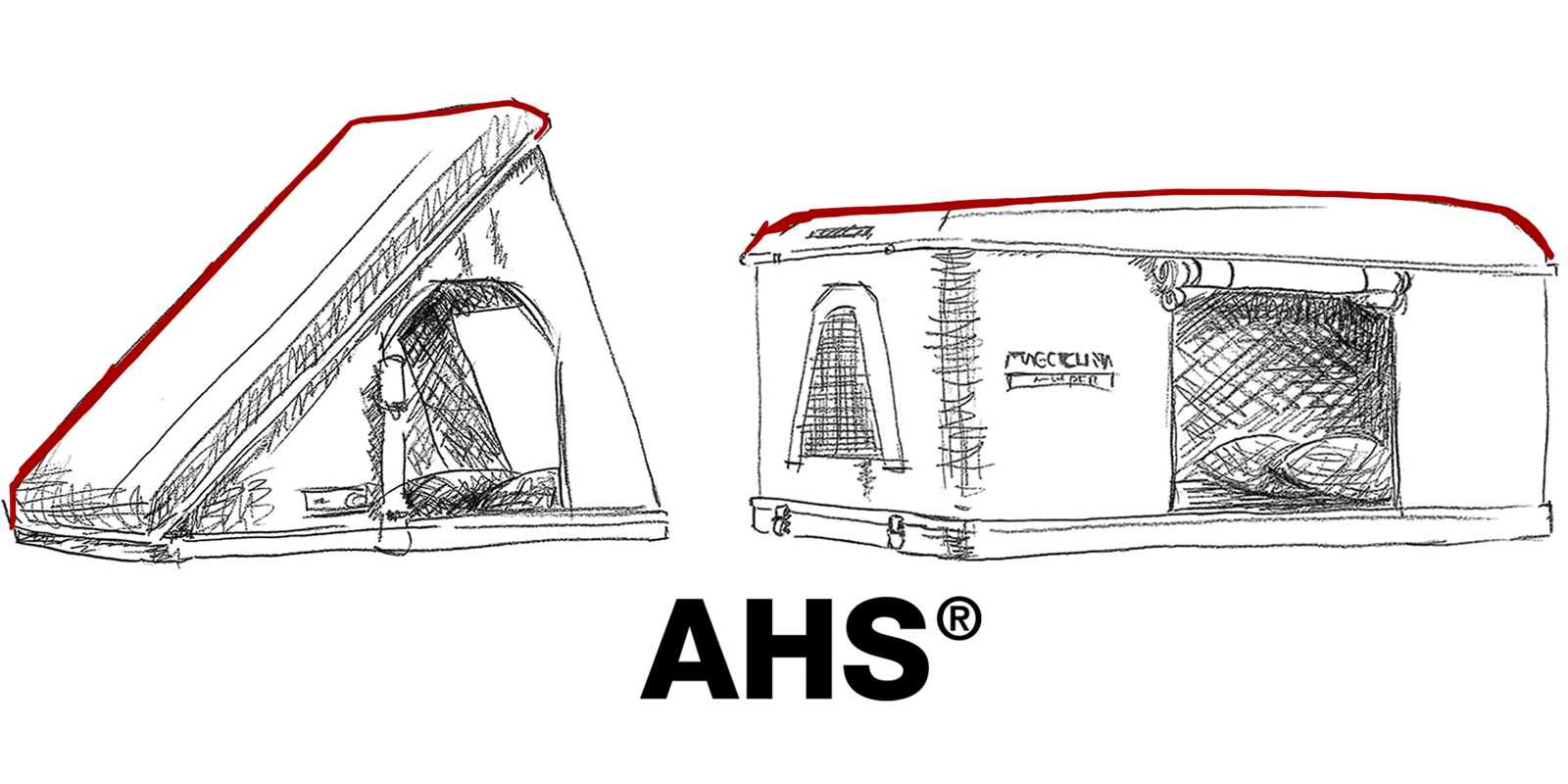
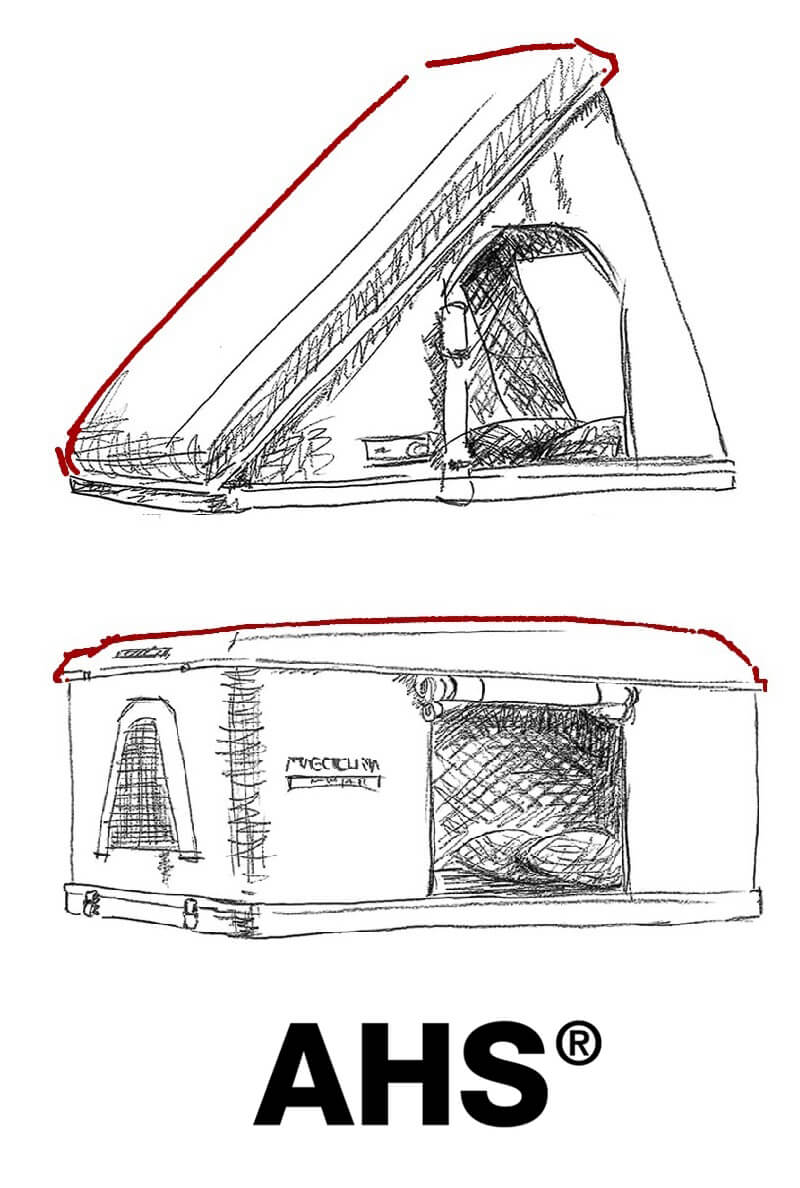 This leads to greater reliability, because the shell, when lifted, fully and actively protects the underlying environment. So, it is not a trivial passive element, a sort of wall, a simple cover without utility: it is in all respects the TRUE roof of the tent! That is why Autohome hard roofs are ACTIVE HARD SHELLS. The roof plays an active protective role. Let's now consider the advantages that this choice entails... the reasons that make Active Hard Shell an advanced project, which allows you to sleep well protected.
This leads to greater reliability, because the shell, when lifted, fully and actively protects the underlying environment. So, it is not a trivial passive element, a sort of wall, a simple cover without utility: it is in all respects the TRUE roof of the tent! That is why Autohome hard roofs are ACTIVE HARD SHELLS. The roof plays an active protective role. Let's now consider the advantages that this choice entails... the reasons that make Active Hard Shell an advanced project, which allows you to sleep well protected.
FIRST: The roof keeps the underlying environment isolated from the heat and cold, thus less moisture and condensation.
SECOND: The fabrics, thanks to the action of the roof, are less exposed to the weather. This ensures more waterproofing, protection and durability.
THIRD: With a similar “active” roof, the walls of the tent are also more stable and supportive. For all these reasons Autohome stands for Active Hard Shell: the difference starts from the roof!
“ACTIVE HARD SHELL” - PART 2
Always in shape with the car
With Autohome when the tent is open and the roof in place, every structural element, from the fabrics to the service ladder, remains within the shape and perimeter of the car. The open tent falls within the space defined laterally by the car mirrors, so it does not undergo the conditioning imposed by parking areas and car parks. 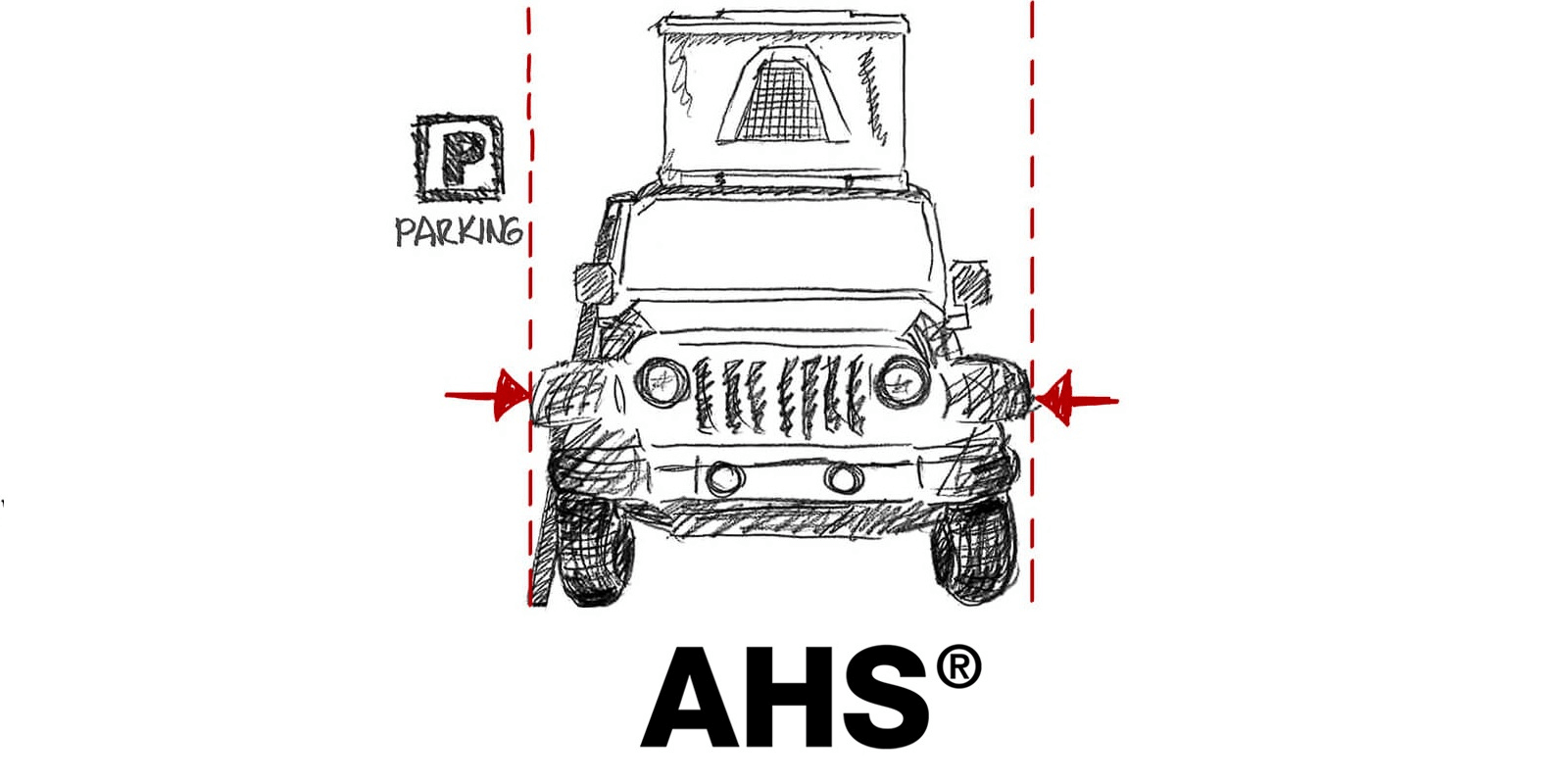
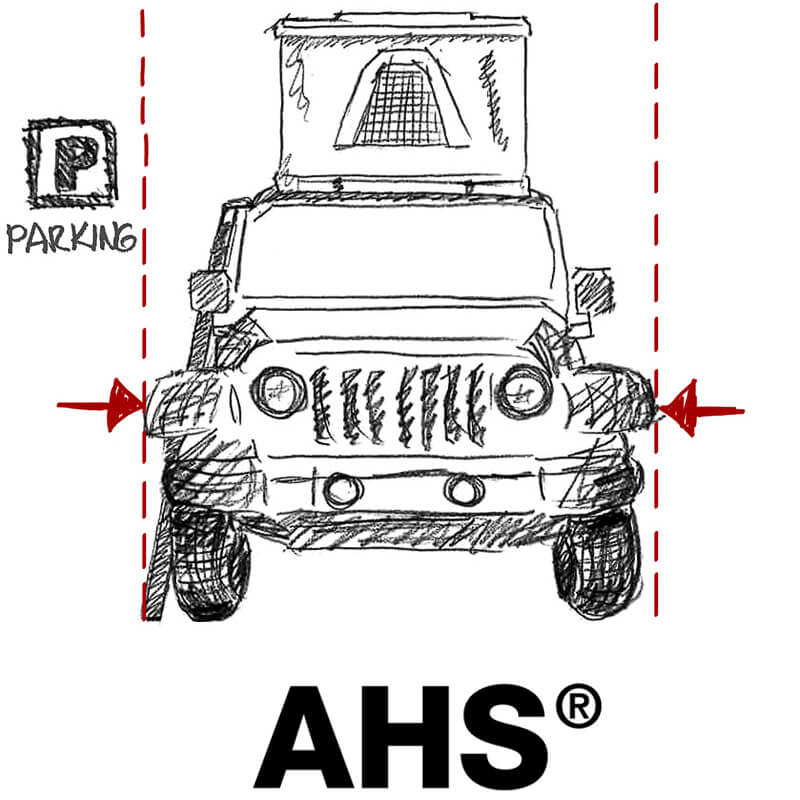 In practice, it means being able to stay anywhere, even in public areas without having to stop only at campsites. Pay close attention to this Autohome prerogative, because on the market there are shell tents or expandable models that, with a folding opening, come out of the shape of the car. They therefore necessarily require the use and overnight stay on campsites or in private areas. While with Autohome and its Active Hard Shell tents, it is possible to easily stop by a lake, a river, or the sea, in pine forests or public parks, always in complete freedom: pull the handbrake and... go to sleep! Also, for this reason with Autohome... the difference starts from the roof!
In practice, it means being able to stay anywhere, even in public areas without having to stop only at campsites. Pay close attention to this Autohome prerogative, because on the market there are shell tents or expandable models that, with a folding opening, come out of the shape of the car. They therefore necessarily require the use and overnight stay on campsites or in private areas. While with Autohome and its Active Hard Shell tents, it is possible to easily stop by a lake, a river, or the sea, in pine forests or public parks, always in complete freedom: pull the handbrake and... go to sleep! Also, for this reason with Autohome... the difference starts from the roof!
“ACTIVE HARD SHELL” - PART 3
The underside of the roof is active as well.
A unique identity, justified by numerous quality elements, capable of distinguishing itself on the market. One of these fundamental elements is the shell with active underside of the roof, or a semi-rigid inner coating designed and manufactured with great care and suitable materials: its function is in fact to concretely help counteract humidity and condensation, 24 hours a day and naturally, thus keeping the environment drier and healthier. 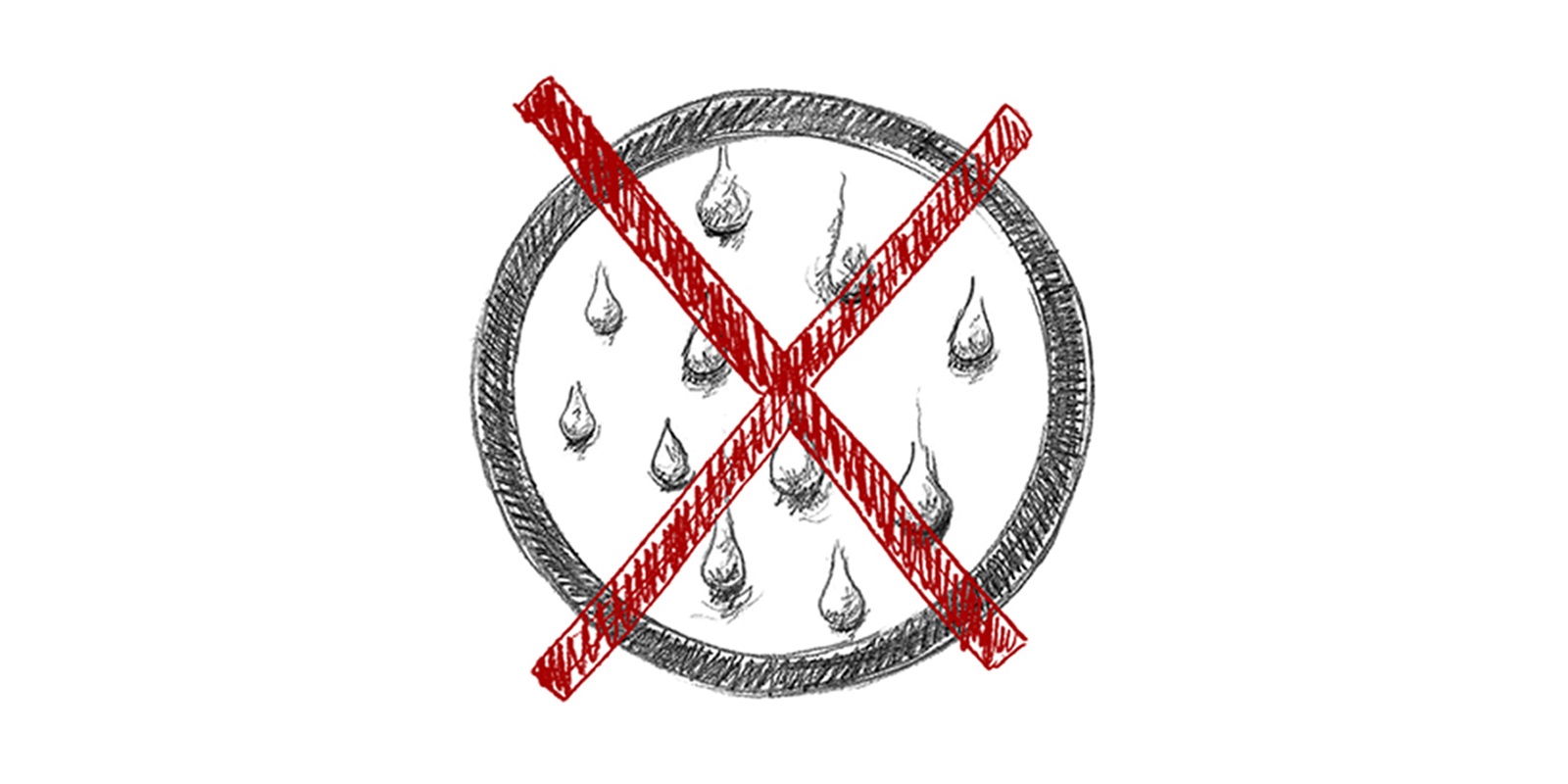
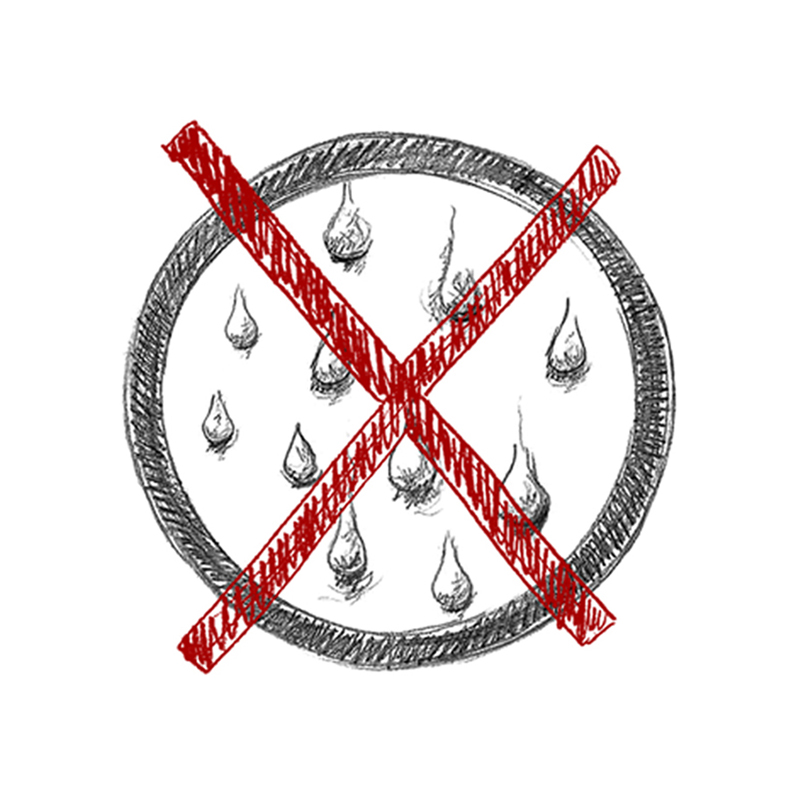 It differs consistently from the trivial, unreliable applied upholstery that sometimes masks poor quality with imaginative designs or eye-catching colours. Even less reliable are the low-cost finishes, almost always of Asian origin. While Autohome'S ACTIVE HARD SHELL represents a constructive principle for interiors typically Made in Italy, of high-quality standard. What makes it stand out? The presence of a double shell, a double cavity insulation, a real “second skin” that actively acts, providing for the well-being in the environment below.
It differs consistently from the trivial, unreliable applied upholstery that sometimes masks poor quality with imaginative designs or eye-catching colours. Even less reliable are the low-cost finishes, almost always of Asian origin. While Autohome'S ACTIVE HARD SHELL represents a constructive principle for interiors typically Made in Italy, of high-quality standard. What makes it stand out? The presence of a double shell, a double cavity insulation, a real “second skin” that actively acts, providing for the well-being in the environment below. 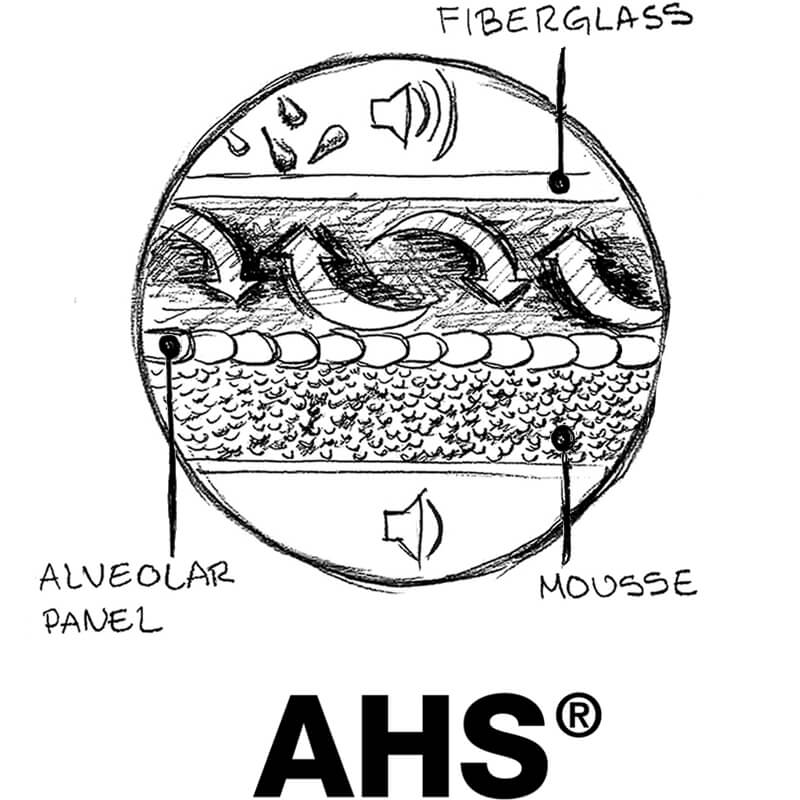
 These are the choices that make Autohome standing out, the only one that can say... the difference starts from the roof!
These are the choices that make Autohome standing out, the only one that can say... the difference starts from the roof!
BERND WOICK
For many years, Bernd Woick has managed shops specializing in outdoor clothing, tents and technical products for trekking, mountaineering and adventure travel. With his professional skills, he is well-known for his expertise in the sector and someone who personally tests his products and is familiar with the opinions of his clients. His company was founded in 1982 in Filderstadt, Germany and now has stores in other German cities. With the help of trusted colleagues, in recent years Woick has decided to dedicate more and more time to travelling, in the form of tours based on a strong spirit of discovery in out-of-the-way locations ensuring maximum contact with nature. He particularly likes to travel in a properly equipped vehicle, tested personally for his type of trip with no limits, and consulting in the auto sector obviously helps. His motto is: “Travel means living your dreams”. This combination of professional experience and passion makes him an ideal tester for Autohome products.
Autohome and Woick: growing together
From its creation, I’ve watched Autohome grow and followed its developments through the products I sell in my specialist stores. We immediately understood the philosophy of Autohome and its technical and manufacturing decisions based on excellence and distinguishing itself in a market where improvisation sadly still exists today. Whereas Autohome aimed straight for excellence and reliability, so we chose it as a flagship manufacturer for our stores. And we were right. Autohome has been increasingly successful for us even with the most demanding and expert clients.
I’ve always believed in the concept of a roof tent
The advantages of an excellent roof tent are so obvious it seems strange that it took so long for the idea to be accepted. And yet it did! I’ve always recommended roof tents, right from the start, over twenty years ago, because I knew they were practical, comfortable and safe. Roof tents are practically immediately available, they are practical and are an excellent shelter from the weather when you’re sleeping outdoors. They make cars more useful and competitive compared to the alternatives for sleeping at night. Today, the concept is largely but not completely accepted. Some people still don’t really understand the difference a roof tent can make and here, the quality of products like Autohome is very persuasive. You don’t change your mind after an Autohome tent, as many of my clients have proved. And, indeed, as I can personally testify.
From consultant to user
These days, I travel most of the year. I can consider myself justifiably a “citizen of the world”, because I’ve been to every continent. Yet there is still so much to explore and discover! Since I use Autohome roof tents so much, I think I can be considered a top tester. I have been able to personally appreciate how the technical and manufacturing decisions of Autohome truly make the difference. In the past, I have given technical and theoretical rather than practical advice, but now it’s the other way round. I know from experience that Autohome roof tents last longer and provide far more protection than any other in the sector. I could sum it up like this: an Autohome tent is the best investment a traveller can make. It provides wellbeing, safety and comfort.
MAGGIOLINA®
A classic design with never-ending surprises
Maggiolina is the handwheel-raised tent that has won over the world of travelling in freedom. It is the biggest seller in all five continents and Autohome’s best seller. Created as long ago as 1958, it has evolved whilst remaining faithful to itself. For anyone with a SUV, a 4WD, van or rather high vehicle, Maggiolina is the go-to tent, offering a blend of comfort and practicality. The main advantages I appreciated:
1. Very practical opening and closing, particularly advantageous for a 4WD or tall vehicle.
2. With the handwheel, the fabric can be stretched so it perfectly taut. The result is a stable and rigid tent, reliable and able to withstand the wind and the rain. No wrinkling or creases: like a top-quality tailor-made suit!
3. The fabric can be stretched taut even after years of frequent use. The handwheel adjusts the amount of stretch.
4. For people with a large build, I recommend the Medium model.
5. For people of average build who have a strong sense of the aesthetic, I recommend the Small model, which is as comfortable as the others in the range and can be used with smaller vehicles. It’s very stylish.
6. If you are over 185 cm tall, the best model is the X-long, perfect for people of above average height.
7. If you need more space when the tent is open or closed, the best model is the Grand Tour, which is a little higher inside. The Airlander is lower but is more streamlined.
8. When the tent is closed, you can see 2 front openings, the most exposed surface where the impact with the air is greatest. But there is no problem travelling even at quite a lick. For safety reasons, the TUV South certification authority specifies 2 openings at the front and one at the rear.
9. For travelling families, say with 2 adults and 2 children and a fairly large car, I’d recommend the Large or X-Large model for maximum comfort.
10. Remember that even open the tent does not jut outside the line of the vehicle or past the wing-mirrors. That means you can use the tent in car-parks and other public areas: along riverbanks, in forests, on a lakeside or close to a torrent… Or motorway service station car-parks or in lay-bys. You’re within the law, so you can stop and sleep. With Maggiolina nobody can tell you to go to a campsite. It really does provide freedom to move. 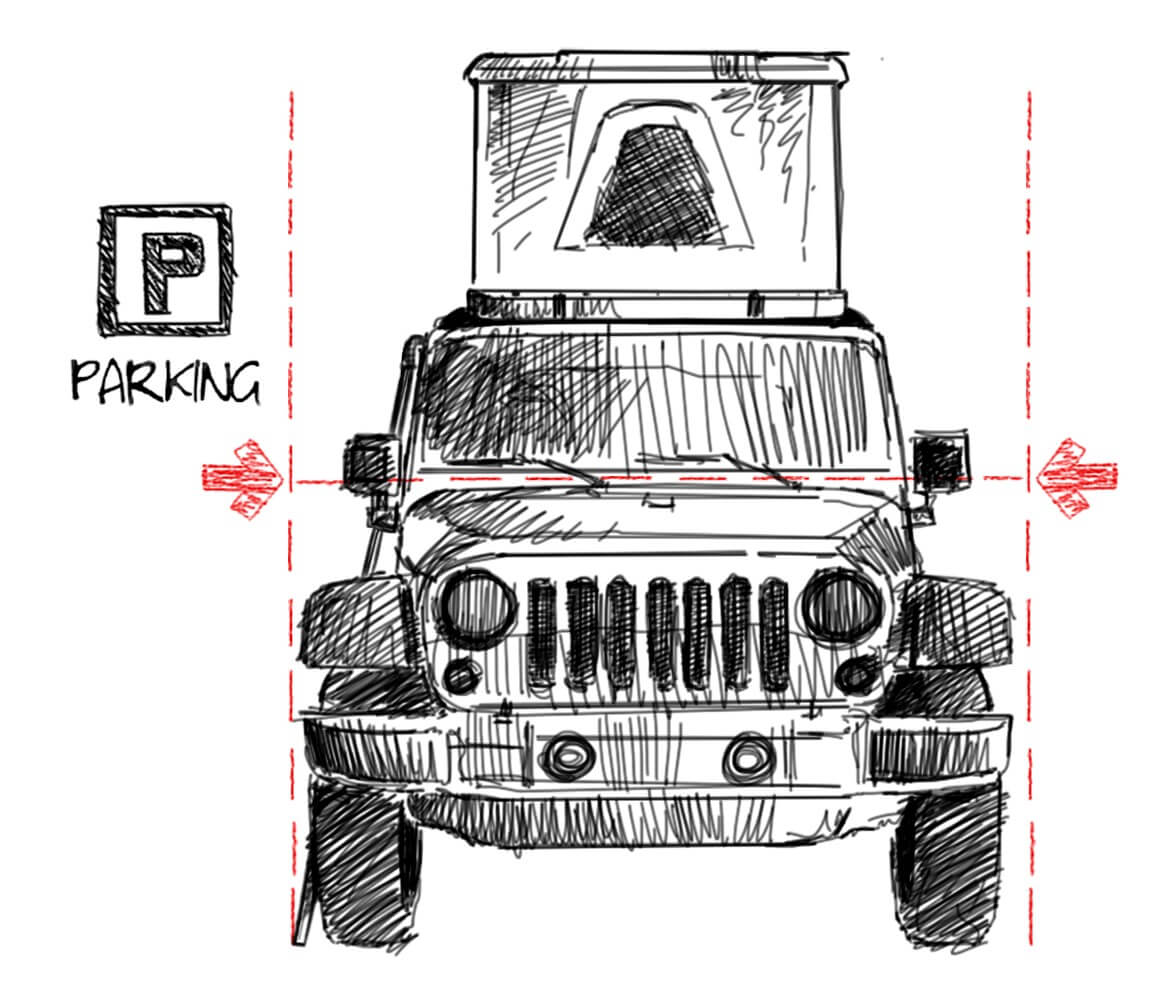
11. The shells are in fibre glass, with all the advan
tages of that material. The tent is ventilated, insulated, does not create condensation and is soundproofed even in the rain, thanks to the thick foam.
12. Finally, the quality of the fabrics: breathable and with rapid round-the-clock water vapour transmission outside the tent.
MAGGIOLINA® EXTREME
A special version for extra loads
Autohome has created the exclusive Maggiolina “Extreme”, a model that enables extra loads on the roof. This version has a more streamlined design whilst also providing more space for extra loading, due to the C guides integrated into the fibre glass. This is the choice of adventure travellers who need to house not only a spare wheel or petrol tanks but also sports equipment, including for surfing.
AIRTOP®
Design and practicality with “double-up” opening
Airtop is a tent that blends great design and excellent practicality. It has two-step, “double-up” opening. The system guarantees rapid opening and easy closing, just by reaching out. It works with 4 gas springs able to lift the upper shell. The springs are fitted to the sides and the result is a stable tent thanks to the windstops fitted to the springs. The main advantages I appreciated:
1. For people with a large build, I recommend the Medium model. For people of average build who want the best vehicle/tent ratio, I recommend the Small model, which looks great even on smaller vehicles.
2. Airtop is often chosen by people with vehicles of medium height. Experience bears this out. For example, Airtop was chosen by MINI BMW. Produced by Autohome exclusively for When the tent is closed, you can see 2 front openings, the most exposed surface where the impact with the air is greatest. But there is no problem travelling even at quite a lick. For safety reasons, the TUV South certification authority specifies 2 openings at the front and one at the rear.
3. As is I often say, for travelling families, 2 adults and 2 children, the choice of tent is very important. In particular, if you have a fairly large vehicle, I recommend the large Airtop or X-large model of Airtop for maximum comfort.
4. Another thing I often point out: even when Airtop is open, it doesn’t jut out from the vehicle or outside the wing-mirrors. That means you can use the tent in car-parks and other public areas: along riverbanks, in forests, on a lakeside or close to a torrent… Or motorway service station car-parks or in lay-bys. You’re within the law, so you can stop and sleep. Nobody can tell you to go to a campsite. 
5. In line with the usual quality of Autohome, the shells are in fibre glass, with all the advantages of that material. The tent is ventilated, insulated, does not create condensation and is soundproofed even in the rain, thanks to the thick foam.
6. Another positive feature is the quality of the fabrics: breathable and with rapid round-the-clock water vapour transmission outside the tent.
COLUMBUS®
A perfect balance of tradition and innovation
Columbus is the Autohome model with a slanting roof, typical of conventional tents. This reference to the original approach – the triangular tent – is very appealing. With the added advantages of modern technology. The main advantages I appreciated:
1. The tent opens immediately and instantaneously, with just two gas springs that lift the upper shell to a height of about 160 cm. It is the tallest Autohome tent.
2. The shells are hinged at the front, with considerable advantages when closing. In particular, you only have to act from the rear to close the tent, without fuss.
3. This is the tent most often chosen by people with high vehicles and those who want to enter from the back. It is also popular because of its height and the rear opening which can be customized.
4. A rational choice determined by practicality. Columbus is easy to use in all conditions. It looks good on all vehicles, closed or open.
5. For people who have quite a large build, I recommend the Medium model, and for people of normal build the Small, which is nonetheless roomy and has a perfect vehicle/tent ratio and looks stylishly made to measure for a smaller vehicle.
6. If you are over 185 cm tall, the best model is the X-long for maximum comfort.
7. As is I often say, for travelling families, 2 adults and 2 children, the choice of tent is very important. In particular, if you have a fairly large vehicle, I recommend the large Columbus or X-large model for maximum comfort.
8. Another thing I often point out: even when Columbus is open, it doesn’t jut out from the vehicle or outside the wing-mirrors. That means you can use the tent in car-parks and other public areas: along riverbanks, in forests, on a lakeside or close to a torrent… Or motorway service station car-parks or in lay-bys. You’re within the law, so you can stop and sleep. Nobody can tell you to go to a campsite. Columbus gives true travel freedom. 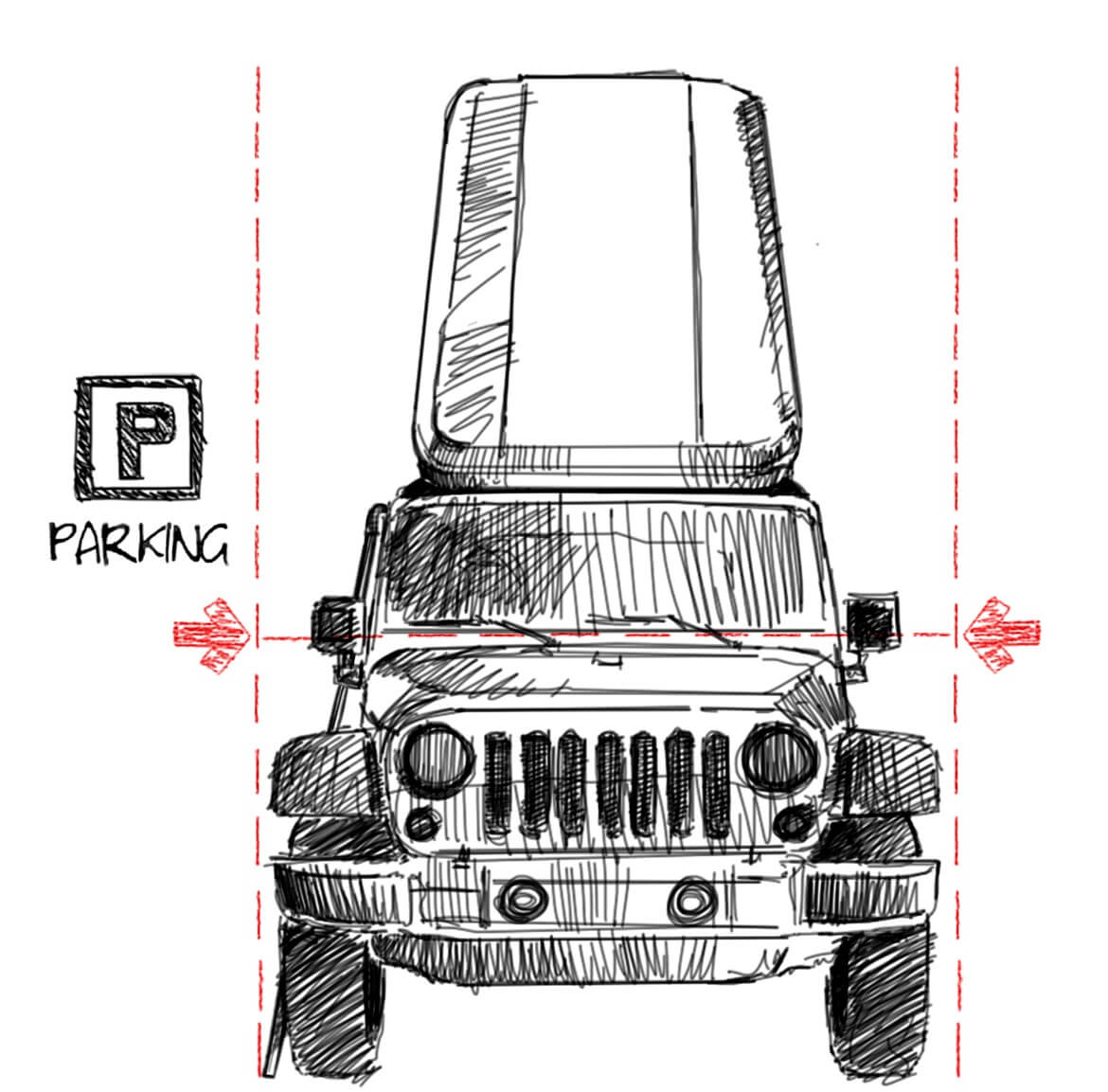
9. A practical tent, Columbus nonetheless maintains the high quality of Autohome, with shells in fiberglass, providing all the advantages of that material. In addition, the tent is ventilated, insulated, does not create condensation and is soundproofed even in the rain, thanks to the thick foam.
10. Another positive feature of Columbus is the quality of the fabrics: breathable and with rapid round-the-clock water vapour transmission outside the tent.
OVERLAND® / AIR-CAMPING® / OVERZONE®
The experience of adventure in the desert becomes a style
I love Africa and everything that is extreme. I couldn’t help but choose the highest quality equipment to help turn my passion into reality. Air-Camping (Overland and Overzone, members of the same Autohome family) was my first choice for the adventure I had ahead of me, initially on my own and then with my family. Let me say they are excellent tents that can be lived in very comfortably. In particular, they are spacious when open and compact when closed: they leave half of the roof of a 4WD free for other materials to be loaded, an absolute necessity for adventure travel. Meaning, they are perfect for the Sahara and people like me who love the desert! Today, thanks to their versatility, they are also chosen for family trips and by people who enjoy the comfort of campsites. Sometimes they are placed on the ground with a series of accessories, for long holiday stays. All of the above have made these tents legendary and enabled true motoring adventure. Not surprisingly, Nino Cirani, the adventurer most people seek to emulate, was the first to use them. The main advantages I appreciated:
1. Easy opening and closing, without any complicated mechanism.
2. The extraordinary fabric which provides stability without turbulence and noise from the wind or the early morning breeze.
3. Everything is designed to withstand the wind and the “sail” effect: the roof is stitched directly to the walls with nothing dangling. The windows can be opened and closed with internal tie-rods like shutters at home.
4. The fabrics are breathable and waterproof, guaranteeing a fresh environment and wellbeing.
OVERCAMP®
A true friend: for the extreme adventurer to the family
Overcamp is a modular tent that can be used in a large variety of ways. An extraordinarily versatile and practical tent, it can be set up in a campsite alongside a veranda. Now considered not only for adventurers, the tent is the frequent choice of families, because of the independent spaces provided by 2 tents together. Spacious, private, comfortable, another Autohome success. The main advantages I appreciated:
1. It takes up only half the vehicle roof space, so there is room for sports equipment and the like.
2. Separate spaces when combined for privacy and independence.
3. Easy opening and closing without any complicated mechanism.
4. High quality fabric providing stability, without turbulence from the wind or noise even in a morning breeze.
5. Every detail is designed to withstand the wind and the “sail” effect: the roof is stitched directly to the walls with nothing dangling. The windows can be opened and closed with internal tie-rods like shutters at home.
6. The fabrics are breathable and waterproof, providing a healthy and fresh environment.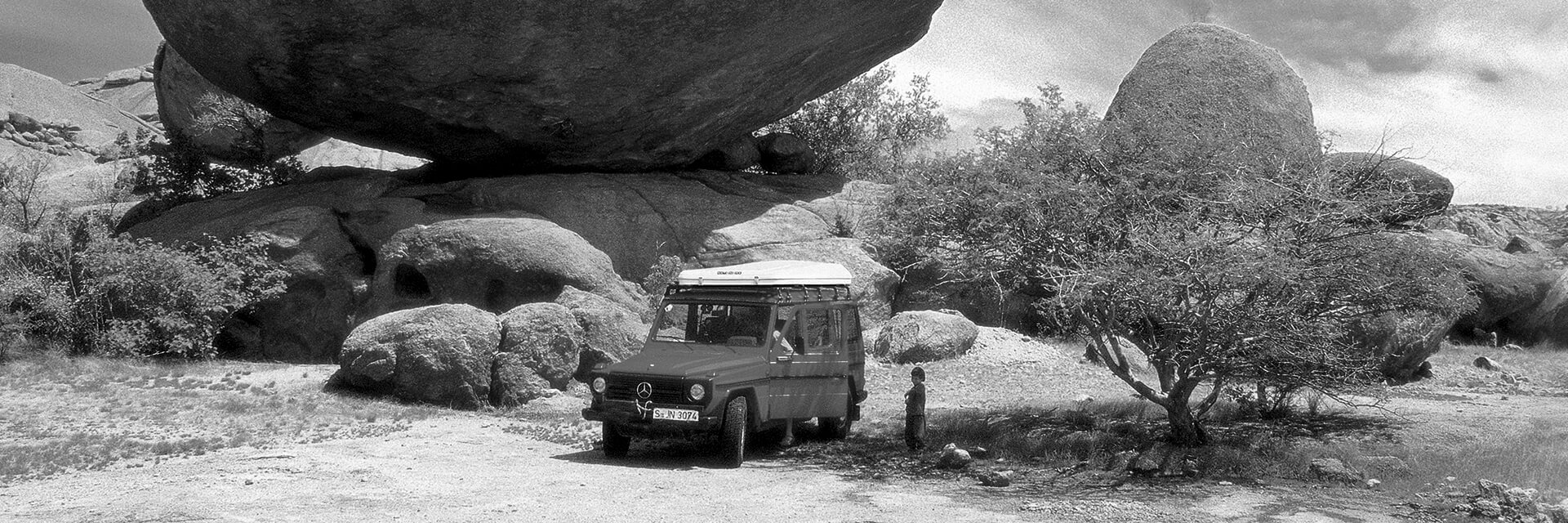
PAOLO MARIN
Paolo Marin, born in the Veneto region of Italy but, by choice, a citizen of the world, is the founder of the well-known and much appreciated Photo Challenge "A trip everyone can manage". For many years he has been considered an expert in adventure travel. He has a passion for the desert and Libya is constantly in his heart. A tour leader, he teaches off-road driving and lives in Padua when he isn’t driving through the desert.
AUTOHOME® MODELS, ONE BY ONE
Maggiolina®
This is the famous range with opening by handwheel which continues to make history in the sector of roof tents. After many years of success, they are still a very popular purchase. It is an Autohome bestseller. How did it become so famous the world over? I think it’s mainly because it opens and, above all, closes so easily. But everything about the tent is of the highest quality.
The range includes a number of different models, with a variety of shell shapes, but all are in fiberglass; this changes the size when the tents are closed, and the windows and other aesthetic details also differ. The range caters for all needs, Small - Medium - Large - X-Long and recently X-Large. So, adventure travel is possible for anyone, even the whole family. In terms of size, it is important to point out that, when open, almost all the models are inside the roof, without jutting out. This is an essential design feature of Autohome tents and means the tents can be used overnight anywhere, in public car-parks, beaches and lay-bys. Nobody can object. This is because sleeping on the roof of the car, without any overhang, including the wing-mirrors, is not considered camping but simply parking, like sleeping in the car. So, with a little bit of common sense and tact, it provides the utmost freedom, whatever the location. My advice to avoid discussions, is to stay away from extravagant or daring places, both in terms of safety and respect for public places. Best also to put the ladder inside the wing-mirrors.

Airlander
This is a streamlined tent, sober, clean, perfect for both small cars and 4WDs/larger vehicles. In terms of practicality and comfort, it has everything you need: 2 doors, 2 windows and mosquito nets at each opening. As I found out for myself several times, the mattress is comfortable and the fabric, as in all Maggiolina models, is breathable, ensuring a fresh, dry and healthy environment. It is also fully waterproof even in the pelting rain.
Airlander Plus
The plus model has zipped doors in an arch shape so they can be opened partially as required. Lying down, the occupants can see all around the tent, without others being able to see in, so privacy is ensured. Plus also has 4 pull-out pockets and elastic roof netting for clothes, belongings and whatever else you need to store away.
Grand Tour
As the name suggests, this is a large tent, with a tall shell and more volume inside than the Airlander. I recommend this model for medium-sized vehicles, such as a SUV, van or 4WD, but it’s also perfectly ok with a FIAT 500. Its style is truly original and this is what makes it so special. The finish and details are as in Airlander Plus except for the slightly larger entrance. The fabric is the same, highly breathable and, of course, perfectly waterproof.
Extreme
This tent was designed for long journeys when all the space available is used to load up the vehicle; but that doesn’t mean it can’t be taken on a sports holiday using the space for whatever sports equipment is needed. The practical and technical functions and fittings are the same as for Airlander Plus and Grand Tour: the difference is in the ability to load more onto the roof. For example, 2 petrol tanks or a spare wheel can be stored, or a canoe or surfboard, provided you don’t exceed the maximum load permitted, as shown in the manual for the roof rack or the vehicle handbook. I reckon it’s a very well-designed tent because it holds its shape and provides ample space for storage. It’s a genuine blend of style and practicality.
Grand Tour 360° - New 2019
This is an important new product from Autohome in 2019. The models are truly original with darkened mosquito netting incorporated in the fabric, guaranteeing privacy even when the doors and windows are open. They have the same well-known Autohome quality in every detail and are top-of-the-range in terms of fittings.
X-Large - New 2019
This is the largest shell-type model in the market: fully 180 x 230 cm, opened by handwheel. Given its size, the opening and closing mechanism is very simple and no-fuss. The X-large model can be used with vans and stays within the wing-mirrors and so is suitable in car-parks and public areas, without the need to find a campsite. A piece of advice that might seem obvious but is important: set up the ladder perpendicular and inside the wing-mirrors of the vehicle; make sure nothing is outside the outline of the vehicle.
Airtop®
Airtop has a distinctive brand and design, but is still a member of the Maggiolina family. All the materials and fittings are as for the Maggiolina range. The only difference is the opening mechanism, with 4 gas springs, rather like the boot of many cars. Opening is in 2 stages. One big advantage is that the opening mechanism is fitted to the side of the tent, so the tent does not need extra length. This way, the whole surface (2.1 metres) of the tent can be used, providing a comfortable bed even for the tallest and 190/ 200 cm of height. Clearly this means the tent is a little narrower because of the lifting arms at the side. Maggiolina is the other way round, wider and a little shorter because of the lifting mechanism. Hence the 2.30 X-long model in the Maggiolina range, for the very tall.
Airtop 360°
E’ un'altra importante novità 2019 di Autohome. Modelli con visione a 360, con aperture a molle e con zanzariere vedo e non vedo integrate nei tessuti, per avere privacy anche quando porte e finestre sono aperte. Per il resto tutto è simile al modello Airtop. Rientrano nella categoria top di gamma in termini di dotazioni. Sulla base delle mie conoscenze nel settore, ho colto che il successo è stato immediato e le richieste di averle sono notevoli, pertanto vi consiglio di fare pre-ordini per tempo.
New 2019 – New closing for shell tents
This year, Autohome changed the closing mechanism for tents, with the addition of innovative aluminium and steel devices. The closing mechanism is attractive and practical. As always with Autohome, the aim is for total safety, with 2 closures at the front, the surface most exposed to the buffeting of the wind, and one only at the rear, as certified by the southern TUV after testing the entire tent for safety. This testing was thorough and the certification complete, unlike the partial certification of some products on the market which are not fully guaranteed as reliable. Users often find themselves with merely verbal assurances and should not trust such incomplete and non-transparent promises.
Columbus®
This is a very popular model, due to its simplicity: just 2 springs, taking up little room, for the lifting mechanisms inside the tent. Two gas springs and everything is ready: the tent opens and closes without fuss. Compact, practical, even inside the tent. At the front of the opened tent, the shells are hinged so no fabric needs to be folded when it is closed. What’s not to like? Rapid opening, beautiful shape, inside height of 160 cm; enough to change clothes. And the side doors become large, comfortable windows.
Columbus Variant
The same model as Columbus, but with the rear more open, with an arch-shaped zip to customize the opening. The fittings are similar to standard, but with an additional elastic netting under the roof, inner light and poles that turn the rear door into an awning.
Air-Camping® / Overland® / Overzone®
This is the Autohome range of fabric tents. After removing the PVC cover, these tents open like a book, easily and without complication, using the ladder as leverage. Each tent has effective and reliable fabric which is strong and thick enough to provide stability. That means no noise as the wind tries to ruffle the walls, not even at night. The fabric does not “inflate” like a sail: the walls and roof are sewn together. The windows also counter the wind effect and are flush with the walls, so do not billow. You can open and close the windows comfortably for inside the tent using the tie-rods as for blinds at home. These tents jut over the sides of the vehicle and so European regulations apply: they can only be used in private areas, not in public spaces or car-parks.
Air-Camping / Overland
Only the colours of the fabric change. Air-Camping is legendary because of its colour scheme, originally chosen by the great adventure traveller Nino Cirani. Overland has softer, more blended colours.
Overzone
This is an Overland tent but with a telescopic pole for the entrance creating an area sheltered from the rain. With some simple accessories the daytime area can be completely separated from the night-time area, providing maximum privacy on a camping holiday. I recommend it for its dual use, because it is perfect for quick trips and can be used as a changing room over longer stays.
Overcamp
This is the tent most often chosen by sportspeople: surfers, cyclists and canoeists to name just three. Opening like a book, the tent is versatile and recommended for travellers who want to put a bike on the roof of the car or another tent, to create two separate bedrooms. This tent does not jut over the vehicle, so can be used in public areas and campsites.
Finally, two pieces of advice…
First, the accessories: it is hard to know what to recommend because customization is, of course, a personal thing. I’d suggest bringing along some spare clamps because some often get lost during frequent assembly and disassembly operations. And a spare handwheel, a sleeping bag and a winter hood, especially if you’re heading up north. Second, keep your speed down. Any load on the roof changes the way the car responds, so extra care is needed and you should also think about the road surface and change your speed accordingly. During stops, check the vehicle and the anchoring of the load to the roof. Tighten anything that has come loose.
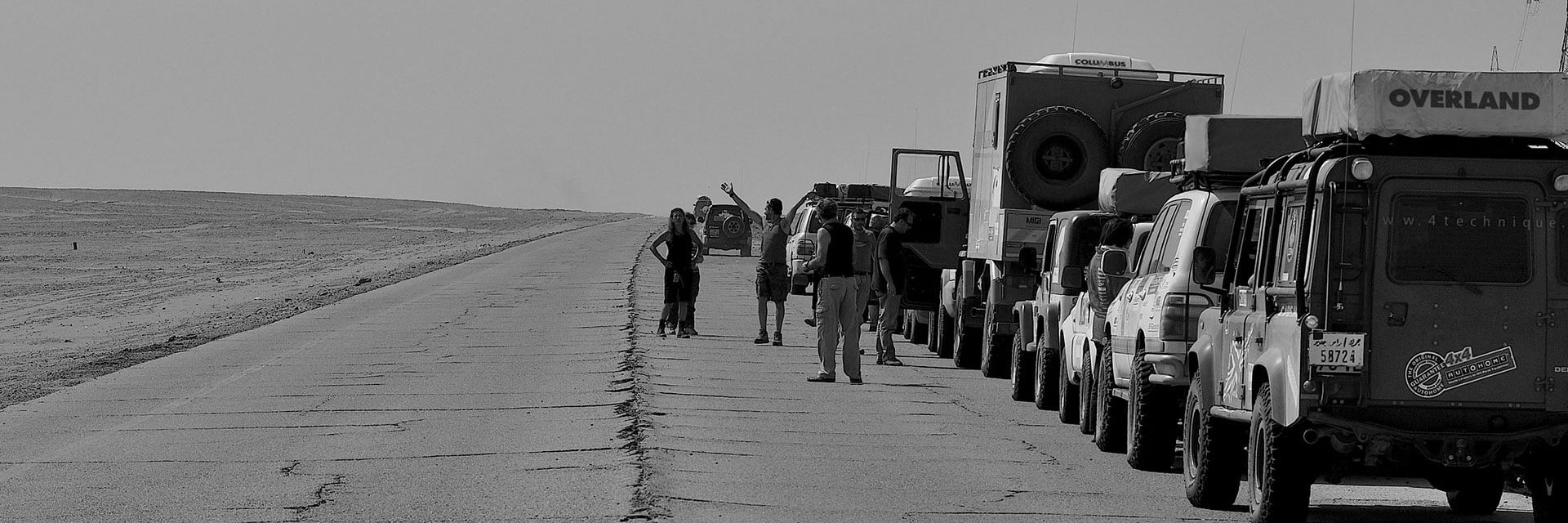
JÜRG SOLLBERGER
Jürg Sollberger is a traveller who has often done things ahead of time. A free spirit and innovator, he has worked on projects and in situations that later became a must for adventure travel. A dreamer, a rebel and certainly a man of courage: a tour leader for all kinds of destination, with every sort of itinerary. You might think that such a man is solitary, a true loner, but Jürg is quite the opposite: to begin with, he is accompanied on his adventures by Doris Sollberger, who shares his achievements. An explorer at the cutting edge, open to dialogue and capable of strong friendships: unsurprisingly, he is an excellent cultural and technical advisor. Including for Autohome. Indeed, he was one of the first travellers in the 90s to severely test Autohome products in Asia, contributing to the beginning of adventure travel in the Far East. His famous tours include long trips in extreme conditions in China, Myanmar, Tibet and other countries in the Far East. In numerous expeditions and events, he has publicly thanked Autohome and spoken of its “Superior rooftent”. A significant homage to the products her himself uses on his adventure trips. Since 1986, he has been an expert instructor in the trans-Africa tour, but his lasting passion has been for the silk-road, which he often uses to illustrate his “no limits” journeys.
The impressions and recommendations of a true “Marco Polo”
COLUMBUS
This is my favourite rooftent because it is higher than conventional tents. Personally, I like the fact that the two shells are hinged together, so the roof is closer to the base when closed and there is no need for a support mechanism. This means that when I close the tent, I don’t have to worry about the elastic folding the fabric inside the shells: there is no fabric at the front, and I think this is a definite advantage. In addition, no hooks are needed to keep the shells closed. In terms of the features of the rooftent, as I said, I appreciate the height, as much as 160 cm. There is nothing like it in the market. I know how comfortable it is; I’m over 190 cm tall and am fairly thick-set but I’m perfectly at ease in the Columbus! I can change, even put on a formal suit for the evening! I’m not joking, I’ve done it once or twice. More often, I’ve just changed into something clean and fresh after hundreds of kilometers of travelling. It’s a great pleasure. Because I’m tall, I chose the Columbus X-LONG (2.30m.), to be even more comfortable. I also like the large rear opening which I can arrange as I like; sometimes I turn the car round and use the tent to sunbathe. I like the design, with two arch-shaped doors which are also windows. So, it’s the height and the hinged closing. But here are some of the advantages I’ve found in my many trips:
1. Roof integral with the base
2. Excellent stability despite the more than average height
3. Quickest ever opening and closing
4. Nothing in the way inside to raise the tent: there are just 2 gas springs at the side you hardly notice
5. The gas springs aren’t hidden in the mattress when the tent is closed. So, the mattress is undisturbed and doesn’t have to be shaped around any mechanism to make room for the springs or their movement. But that is not all! The fabric too is important: Airtex, technological, perfectly waterproof and of high quality, but above all compact: it folds away easily inside the tent. To sum up: Columbus is a dynamic and practical tent for adventure trips, for anyone who is on the move day in day out but doesn’t want to forgo comfort. Which also means the ability to choose the best location: the fact that it doesn’t jut over the sides of the vehicle means it can be used anywhere. Just one piece of advice: make sure the ladder is inside the wing-mirrors. 
WINGS
When I saw them for the first time, I immediately thought of bat wings and that these were just what the Maggiolina range needed. They create a cover of 160 cm at the entrance to the tent, which is a benefit for a number of reasons, above all making it easy to enter. It’s a great idea, and doesn’t require any changes to the tent, such as holes in the shell. Nothing! The Wings can be added using a support clipped under the shell run-off. All standard fittings. Let me explain the advantages of this useful accessory, which I strongly recommend: it doesn’t take up much space and can be set up quickly and easily.
1. It makes a large entrance sheltered from the rain, so you can change your shoes, for example, without getting wet. It keeps everything dry, including the mattress. In the morning, when you wake up, you’re perfectly dry.
2. The hooks for slippers or boots – in one corner of the covering - are very useful.
3. When it is very hot, the tent doors can be fully opened to change the air, while the tent is still protected from the rain, the sunlight and prying eyes, ensuring the utmost privacy.
THE WINTER HOOD
Conceptually this practical accessory by Autohome is like the hoody or jumper you wrap round your shoulders in cool winter evenings or when the temperature suddenly drops. If you need to travel north or to a place of high altitude, this hood is very useful, particularly in springtime when the evenings are quite cold and it may be raining, because it acts as an excellent shelter. I’ve tried it out and it certainly keeps in the heat in the early morning. The material is very practical and the heat and shelter make it easy to sleep a little longer, if you want to. One piece of advice: when you fit the hood, keep one or two windows half-closed to get a change of air and let the moisture out. It’s very compact too: it’s contained in just a small bag, so you can put it anywhere and it doesn’t get in the way; I always leave it hooked up inside the tent when I’m travelling.
FEET
These supports are classic accessories and come in really handy. Especially in a campsite after midnight. Most campsites in Europe close at midnight, for the peace and quiet, so if you think you won’t be back until after midnight, it’s a good idea to leave the tent on these ground supports in the allotted area. If you’re staying somewhere on holiday for any amount of time, the supports are indispensable: the rooftent can be used as a traditional tent on the ground.
CHANGING ROOM
I know how useful it is to have a changing room next to the tent. It can be used on a thousand different occasions: to change clothes, of course, but also to keep your personal belongings, store accessories or fit some equipment such as a table, chairs or a fridge, shopping bags, a dressing gown or beach wipes, and so on. Safety and privacy: a protected area closed on all four sides, away from prying eyes morning and night. It can be fitted on just a few poles and attached rapidly to the rooftent.
AWNINGS
This accessory creates a large entrance to the tent, protecting against the sun and the rain. It reaches as far as the ground so also acts as a windbreak and keeps out the dust and fumes from passing vehicles in campsites. Of course, the vehicle needs to be parked properly to get the most out of these benefits. The protection is excellent: for a bike, a barbecue or table and chairs. Or a dining room or area for relaxation in the shade. The awnings can be fitted both sides of the tent and can be used together with a changing room or veranda. A complete system for protection against the sun and rain.
VERANDA
You’ve found somewhere you want to stay for a week. Or you’re in a campsite that has everything you need. What could be better than a veranda? It’s like having another tent, with its independent and self-standing structure. It doesn’t need to be near your vehicle. With a veranda, you can go to eh seaside or explore the local area without having to put everything back into the car. You can go shopping without having to take things with you. It’s particularly useful for quickly storing sports equipment, whenever the need arises. The fact that the veranda is a stand-alone structure means you can keep your place in the campsite even when you’re away.

AKIS TEMPERIDIS
A GENUINE OVERLANDER
Akis Temperidis is a hardcore traveller on wheels. After a long and rewarding career as a car, motorcycle and travel writer, in 2007 he turned his ultimate dream into reality by starting up “The World Offroad I” project, an around the world expedition in a Land Rover Discovery3 fitted with a Maggiolina Green Forest roof tent. Akis was accompanied by his partner in life Vula Netou in the epic adventure, which was predominantly sponsored by the best-selling car magazine in Greece. The figures of the first “The World Offroad” expedition speak for themselves: 167,000 km in 1,234 days in 67 countries in 5 continents. 718 nights spent in the Maggiolina tent! The expedition became a media sensation as soon as Akis and Vula returned to Europe in 2010 and since then they never settled down. After a 15-month break in Tanzania where they worked as managers at Saadani River Lodge, the couple of adventurers moved to Italy, where their daughter was born. In 2014 Autohome introduced Akis to the “7 Mila Miglia Lontano” association and he became the only non-Italian member of its Around the World project. After six years of living and working in Italy, Akis decided to take his family and travel the world again. The World Offroad Vol.2 started in summer 2018 and after prologue tour around Mediterranean Europe, it starts heading towards central Asia and Mongolia. The vehicle is a 4x4 IVECO camper fitted with a one-off Overland tent on its roof to be used as an extra space for relax or for hosting a family guest. While travelling, Akis always works as a writer, photographer and publicist on numerous projects with auto makers, and is also a freelance correspondent for travel magazines and websites like the greek Quattroruote, Motoroids.com, Andro.gr and other media overseas. Akis intends to travel around the world for much longer this time and prepares a series of documentary films focused on his overland adventures.
“Maggiolina was our home for 1200 days. And we still miss it!”
"A life spent travelling is tough but rewarding”, my partner Vula is fond of saying. These years from 2007 to 2010 were the best in our lives so we are confident that our new project will be as rewarding, not only for our family but for all the people who follow us. We organized this new trip around the world not only because we couldn’t stand ordinary life, but aiming to give our daughter the unique experience of overlanding, provide her the best possible education and enrich her personality.
More than a tent: positive energy!
During our previous, 1,234-day adventure, the Land Rover was like the third member of the expedition and the Autohome Maggiolina tent our home. We still miss it! Maggiolina was essential to our lifestyle, since it accommodated us for no less than 718 nights in more than 600 different spots around the world. We lived in it for almost two years, actually the best years of our lives: from the dunes of the Sahara desert to hundreds of remote African villages, from the mountains of the Assassins in Iran to the Himalaya range in Ladakh and from downtown Mumbai to the salt desert of the Salar de Uyuni in Bolivia. Each dawn was unique. Going back in time we still remember all nights we spent in our beloved Maggiolina – it made our downs greener providing us with positive energy every single day of the trip. We can say we were addicted to the Maggiolina each time we were invited to stay in a local house or hostel. Local people were curious and friendly to meet two people who were living in 2x1,30 m. space, that’s why a roof tent inspires empathy to all people. We slept in sizzling temperatures in Pakistan and in freezing conditions in Patagonia but we always felt cocooned, safe and happy in it. This time we have a proper camper vehicle but we still needed a roof tent, that’s why we asked from Autohome to manufacture a one-off, 90 cm wide Overland tent to fit it on the roof of our IVECO. We have already used it extensively in our European tour and is a great place to relax or take a nap during the day or to host a friend. It is our country house on wheels!
More than a tent: positive energy!
During our previous, 1,234-day adventure, the Land Rover was like the third member of the expedition and the Autohome Maggiolina tent our home. We still miss it! Maggiolina was essential to our lifestyle, since it accommodated us for no less than 718 nights in more than 600 different spots around the world. We lived in it for almost two years, actually the best years of our lives: from the dunes of the Sahara desert to hundreds of remote African villages, from the mountains of the Assassins in Iran to the Himalaya range in Ladakh and from downtown Mumbai to the salt desert of the Salar de Uyuni in Bolivia. Each dawn was unique. Going back in time we still remember all nights we spent in our beloved Maggiolina – it made our downs greener providing us with positive energy every single day of the trip. We can say we were addicted to the Maggiolina each time we were invited to stay in a local house or hostel. Local people were curious and friendly to meet two people who were living in 2x1,30 m. space, that’s why a roof tent inspires empathy to all people. We slept in sizzling temperatures in Pakistan and in freezing conditions in Patagonia but we always felt cocooned, safe and happy in it. This time we have a proper camper vehicle but we still needed a roof tent, that’s why we asked from Autohome to manufacture a one-off, 90 cm wide Overland tent to fit it on the roof of our IVECO. We have already used it extensively in our European tour and is a great place to relax or take a nap during the day or to host a friend. It is our country house on wheels!
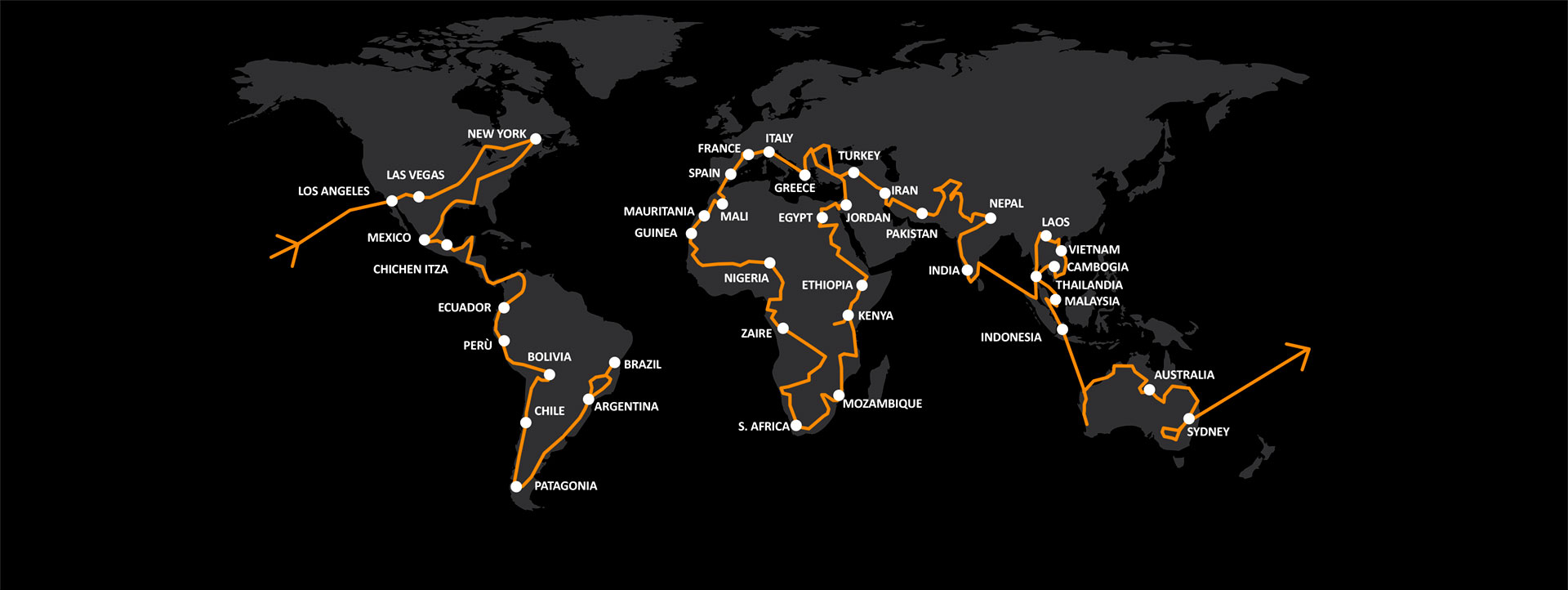
VULA NETOU
The story of Vula Netou and how she took up adventure travel is fascinating. She is a young, passionate woman, full of life with a history in dance, first as a performer, then as a choreographer. For many years she has worked in the theatre as a dance teacher. Gradually, she fell in love with the freedom of adventure travel and shared the dream of Akis Temperidis to travel the world for nearly four years. Because of her legendary round the world tour, she can be considered an ideal tester, particularly in relation to the needs of women on arduous journeys of this kind. The figures speak for themselves: 168,000 km covered in 1,177 days, visiting 67 countries in 5 continents. Over 70 articles have been written about the tour, and there have been over 150,000 clicks. More than 200 hours of film are available, edited into a docufilm released the world over.
The Autohome Overland accessories I know well.
First of all, I should say I was won over by the styling and design of Autohome products (we women are very keen on aesthetics!). But they would not count for much if they weren’t also extremely practical. The perfect blend of form and content is what really distinguishes Autohome. Particularly the Overland system. I call it a “system” because that’s really what it is. If you look at the rooftent and the accessories, they all have a practical, pleasing design. They are made to go well together, for extra comfort: ideal for long stays, for example in campsites, but also for frequent short stays. The Overland system brings together action and relaxation.
Some features in detail:
VERANDA
With the Overland system, the veranda can be customized with the rooftent according to the type of holiday, i.e. with the tent on the roof for frequent short stays or the tent on supports on the ground for long stays in campsites. The veranda is a stand-alone structure which can be used to store things while you are away at the seaside or shopping and is the perfect accessory for anyone holidaying in campsites.
CHANGING ROOM
This accessory is a true ally. Just a few days using it will convince you it is an indispensable part of the equipment. Essentially, it has 4 walls in the same fabric as the tent, connected by zip fastener, providing two types of use. Everything can be applied simply under the tent floor. It provides room to change clothes but also to store camping equipment, especially during bad weather. It is a simple accessory but adds to comfort, without cluttering up the tent itself: the changing room fits the tent perfectly. This too makes it a “system”, optimizing the space without sacrificing the compact nature of Overland.
FEET
The ground supports might seem marginal but actually they’re often essential, I guarantee it! Naturally, for long stays they are indispensable. Remember this: with the supports you don’t have to stick to the closing times of the campsite, for example you can return after midnight, when vehicles usually aren’t allowed in. Just place the tent on the ground and you can return on foot to the campsite whenever you want.
WINTER HOOD
I have no difficulty in saying that this accessory is a lifesaver! During our trip, I particularly remember the freezing nights in Tierra del Fuego, minus 10 degrees or more. So, we always fitted the hood to the rooftent. Even when you’re not going to such extremes, the hood is very useful. It keeps you warm when it is cold and cool when it is hot, which can often happen in a single night during a trip or holiday, for example at altitude or in the desert, but elsewhere too. In Europe there are plenty of places with a difference in temperature of 25 degrees between day and night.

EUGENIO MARTIGNANI
Eugenio Martignani has a long track record in adventure travel on board a series of off-road vehicles. He has transformed his passion for nature and exploration of far-off lands into a profession, as a journalist specializing in 4WD autos. For the past thirty years, he has contributed to Italian and international magazines, worked in TV as a test driver, technician, sportsman and travel reporter. He has seven Camel Trophies, years of experience in African Rally Raids, has crossed Siberia in winter and headed up the frozen Mackenzie River as far as the Beaufort Sea. And more. For work or fun, he has driven in all the Continents: from the Amazon to Mongolia, from Australia to the Polar Circle, from Indonesia to South Africa. He has written books and guidebooks for off-road vehicles and, when he has a little time, heads off to somewhere new, with a preference for deserts, which he has explored the world over. His “mission” is to leave civilization behind and explore unknown destinations, because – as he says - “the four elements of our planet are earth, water, air and fire, not asphalt or cement!” On his off-road adventures, he has used and tested the roof tents of various manufacturers and, in particular, the wide range of Autohome products, which are able to meet even his demanding needs. “What do I look for in a roof tent? Distance from the ground, protection against animals, rapid opening and closing and comfort inside because a good night’s sleep is all important if you want to travel well.”
THE BASIC FEATURES OF AUTOHOME QUALITY
In general, they are all tents of superior quality, with manufacturing and technical features that undoubtedly place them at the top of the sector. Technically (function, performance and comfort) and in aesthetic terms, they are unbeatable. Autohome represents “history” and the continuous development of roof tents for vehicles; the company is the market leader with products that just can’t be copied. It is no accident that they were the first in the world to patent and develop this type of tent. Since 1958 they have created a whole range of innovations and successful products. Their tents are the biggest sellers the world over, which is unusual because quality doesn’t usually coincide with quantity. But with Autohome, it does. Another added value which today is particularly important is pride in a product that bears the “Made in Italy” label, with exclusively Italian and some European suppliers.
PROFILE OF INDIVIDUAL PRODUCTS
MAGGIOLINA® (AIRLANDER - GRAND TOUR- EXTREME – EXTREME FOREST)
These are models that open and close with a handwheel, using 4 lifting poles, two at the front and 2 at the rear. Fabrics used: DRALON® (Made in Germany) and AIRTEX (German-made, of the highest technical quality).
AIRTOP®
Airtop opens with gas springs fitted into the 4 lifting arms, in pairs on both sides of the tent. Fabrics used: DRALON® and AIRTEX®
COLUMBUS®
Tent models opening with gas springs fitted into 2 lifting poles on the sides. Fabric used: AIRTEX®
AIR-CAMPING®- OVERLAND®
This tent opens “like a book” with 2 platforms hinged at the sides with 3 ribs supporting the fabric.
OVERZONE®
Conceptually similar to Overland, opening like a book and again with 2 platforms hinged at the sides with 3 ribs supporting the fabric and a further adjustable rib at the entrance to the tent.
OVERCAMP®
Opening with 3 adjustable ribs supporting the fabric. I should point out that one of the advantages of these tents is that, when they are closed, they only take up half of the space on the vehicle roof, leaving room for sports gear (for example for surfing or canoeing) or other equipment.

ROBERTO MANOCCHI
THE OFF-ROAD GURU
This is how they would call him if he were born in India: guru. Instead, he is a Venetian from Venice, as he likes to call himself. For this, everybody actually calls him the “mechanic of dreams”: with his skilful hands even the most extraordinary world tour projects come true. After all, in his career which started far back in 1990, he has been accompanied by many titles and appellations: engineer, tour leader, maestro… But he is always the one and only Roberto “the wizard” of the mechanics shop, capable of transforming a vehicle into something that will be able to withstand challenges reaching beyond imagination. Today he is a consolidated reference especially in the world of Land Rovers, because, as everyone knows, his soul always travels and lives in a Defender. An intelligent and sensitive auto preparer, his job always starts from the expectations of the person that will travel rather than from the technical components. And yet he really masters technology! Very few know all about 4x4s like him. He knows how to be the friend who wisely gives advice and, at the same time, the super expert without excessive triumphalism and senseless ideas. His driving force is surely passion, but he does not let it take control. This is why he is sharp, rational and very meticulous, an exceptional auto testerman, sought-after in all Europe: merciless judgements, but always well justified. With his profile and background, Autohome wanted him to be the verifier for its innovations: products, systems, accessories. Now his presence has become a consolidated tradition: nothing passes unless approved by Manocchi. The most recent test where he was protagonist was the one performed on the new closures that Autohome intends to introduce on all hard shell tents starting from 2020. After exhausting tests on the field, the Wizard of the auto workshop declared: “A very innovative closure makes the concept of functionality in the sector take a giant leap forward. It is a reconfirmation of the commitment and top quality which makes Autohome stand out even with regards to the technological elements.” Take the word of the guru.
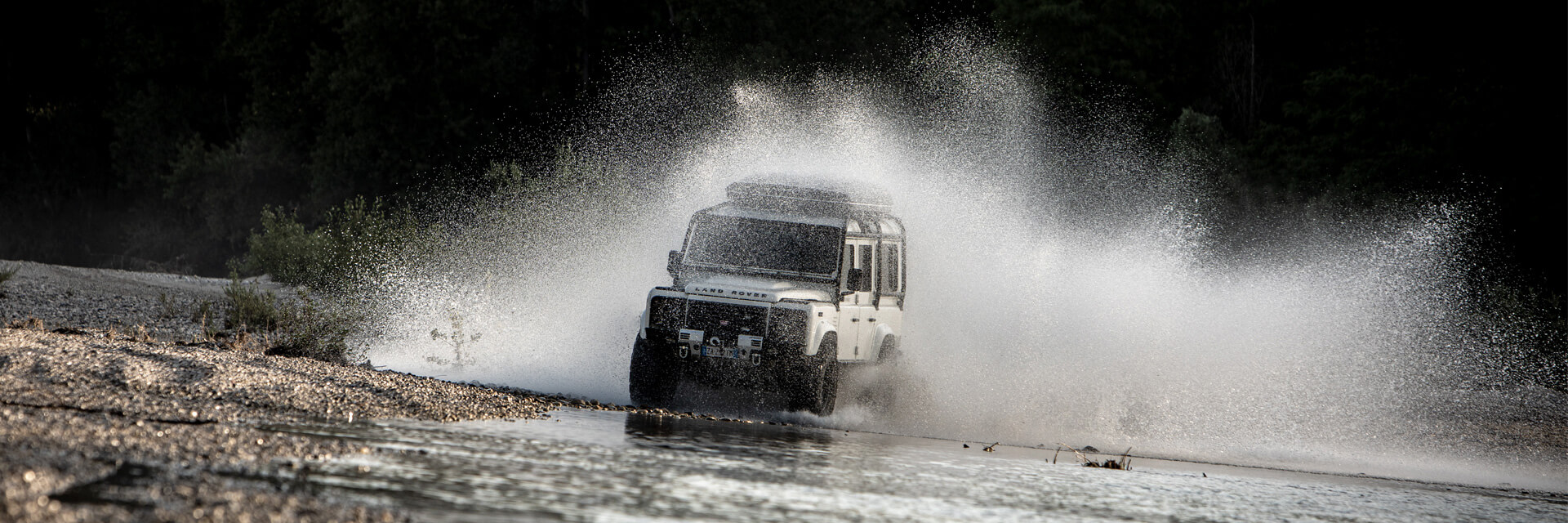
"Luggi" LUDWIG SCHMID
Ludwig Schmid offers professional off-road equipment. He is one of the best southern Germany specialists in the fitting and preparation of vehicles for long-distance adventure travels. Thanks to his high-level mechanic job and to being part of the DTM Audi (GT-series) team at the Rally Dakar, he also has a wide and qualified experience in off-road. His passion for the off-road world has been handed on from his father. As he remembers: “I’ve always been fascinated by off-road, by the spirit of freedom, the contact with nature that makes it unique. At the same time, this is a world where technology is essential and precision and rationality are necessary. This is probably why I managed to make a job out of my passion. I love not having any barrier between my hobby and my job”. It is not a coincident that, apart from the off-road, his favorite hobbies are fishing, hunting, skiing and ice hockey. Hitting the road is what makes him happy the most and makes him able to improve his professional skills.
“His” tent is Maggiolina Grand Tour 360°
Luggi travels a lot by using roof tents, especially in Europe in any season. His tents have always been from Autohome. He prefers the difficult weather conditions of the North and during his journeys he came up with the idea of optimizing the Maggiolina tent; using his intuition the Maggiolina Grand Tour 360° was created. “This is a tent that in its basic project has been designed to offer great space in the inside and maximum view outside. Moreover, it is very solid and stable, so much that it can be used as a trunk during the journey. On the top shell of the rooftop tent it also offers roof racks to load some more material. Thanks to my advices, the production department highlighted the characteristics of Maggiolina and made Grand Tour 360° the ideal tent for every climate: thanks to the wide windows, it’s ideal for hot weather and for those needing high protection from bad weather. A further element that I highlighted is the necessity to get maximum protection against insects. A demand that is shared by journeys to North and South alike. Thanks to a high-quality darkening net, Maggiolina Grand Tour 360° protects your privacy by keeping good air circulation. This is due to AIRTEX® fabric on the side walls: waterproof yet able to expel water vapor outside the tent. Moreover, I always appreciated the great accuracy with which Autohome has thought through and created this product. For example, the fact that doors and windows can be partially or totally darkened for a maximum comfort."
